In June 2014 I flew to St. Paul Island, situated in the Bering Sea between the USA and Russia. St. Paul, the largest of the Pribilof Islands, is a volcanic mass with a land area of 100 km2. St. Paul Island was discovered by Russian explorers in 1788. Russian fur traders later established a settlement on the island, and brought native Siberian and Aleutian people there as slaves to work with fur seal skins which the traders sold for a great deal of money.
Today about 500 Alaska natives live there, and the island serve as an important base for the Bering Sea crab fisheries. Large colonies of Northern fur seals and rich seabird cliffs make the island teem with life. More than 2.7 million seabirds, ranging from common murre and crested auklet to tufted puffin and cormorant, nest on the Pribilofs, making it the largest seabird colony in the Northern Hemisphere. The island is a popular destination for North American birders, especially since it often receives Eurasian species rare in North America. It is therefore a favored destination for hardcore ABA birders coming there to tick off their checklists. As a non-birder, I came mainly for seabird photography. I bought my trip through TDX, a company operated by the natives. Although expensive, it was very interesting to visit this Arctic island with its polar climate and exotic wildlife. TDX offered excellent guides who drove us around the island for more than 12 hours a day ensuring extensive birding on the “Galapagos of the North” as it is also called.
Some early-blooming St. Paul Island wildflowers can be seen here.

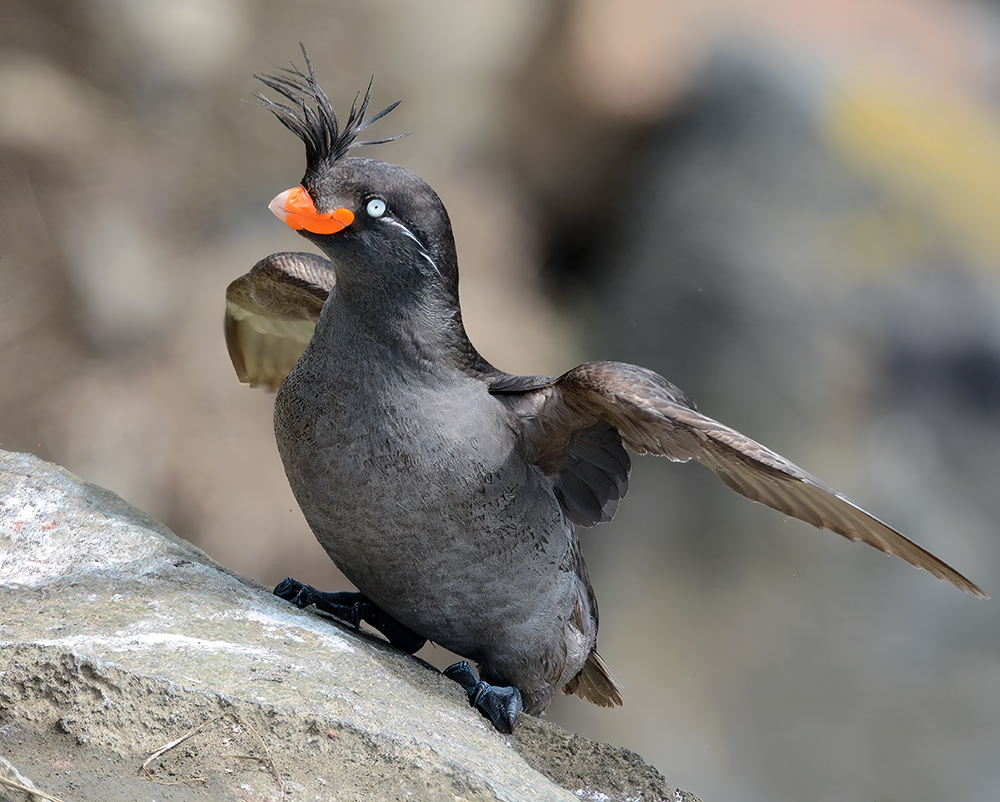
Crested Auklet (Aethia cristatella)
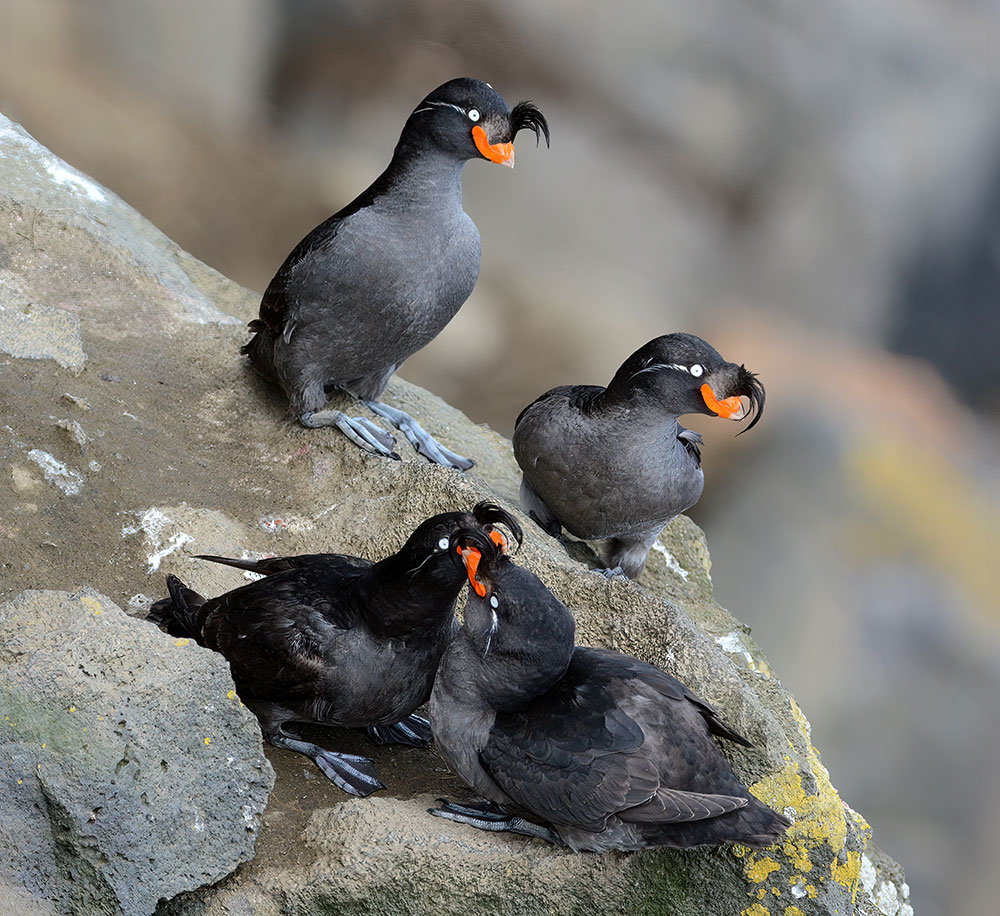
Crested Auklet
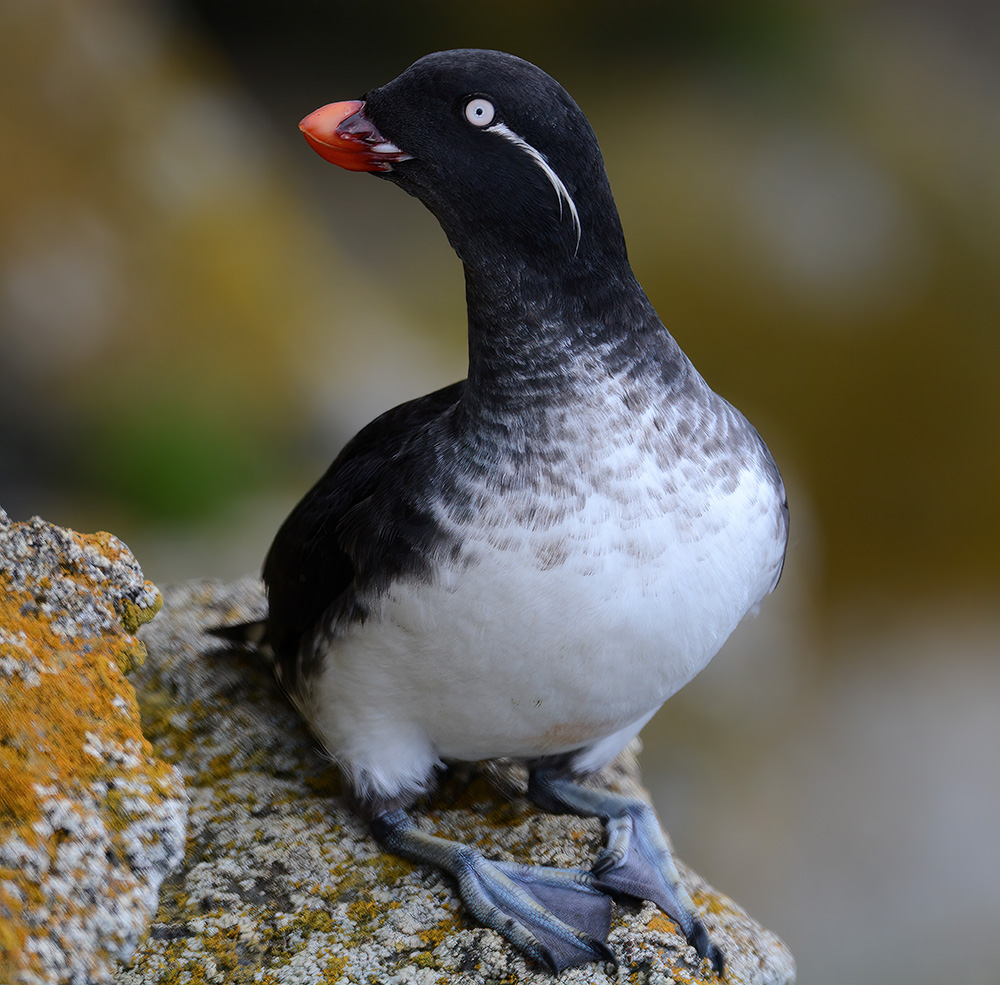
Parakeet Auklet (Aethia psittacula)
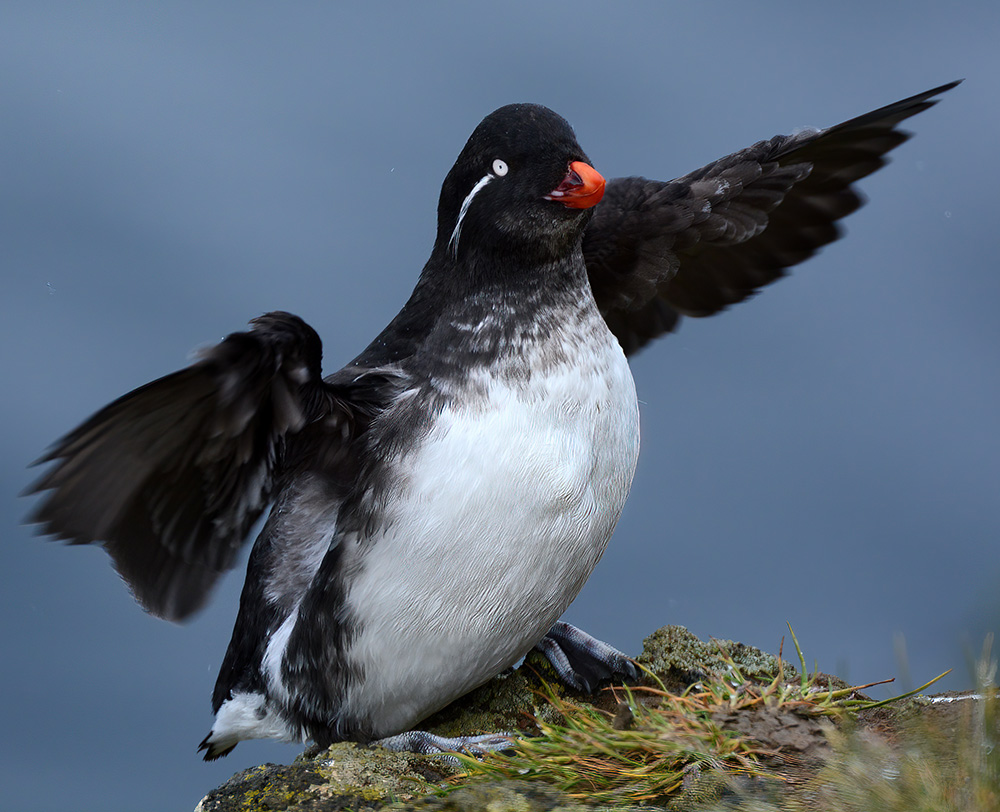
Parakeet Auklet
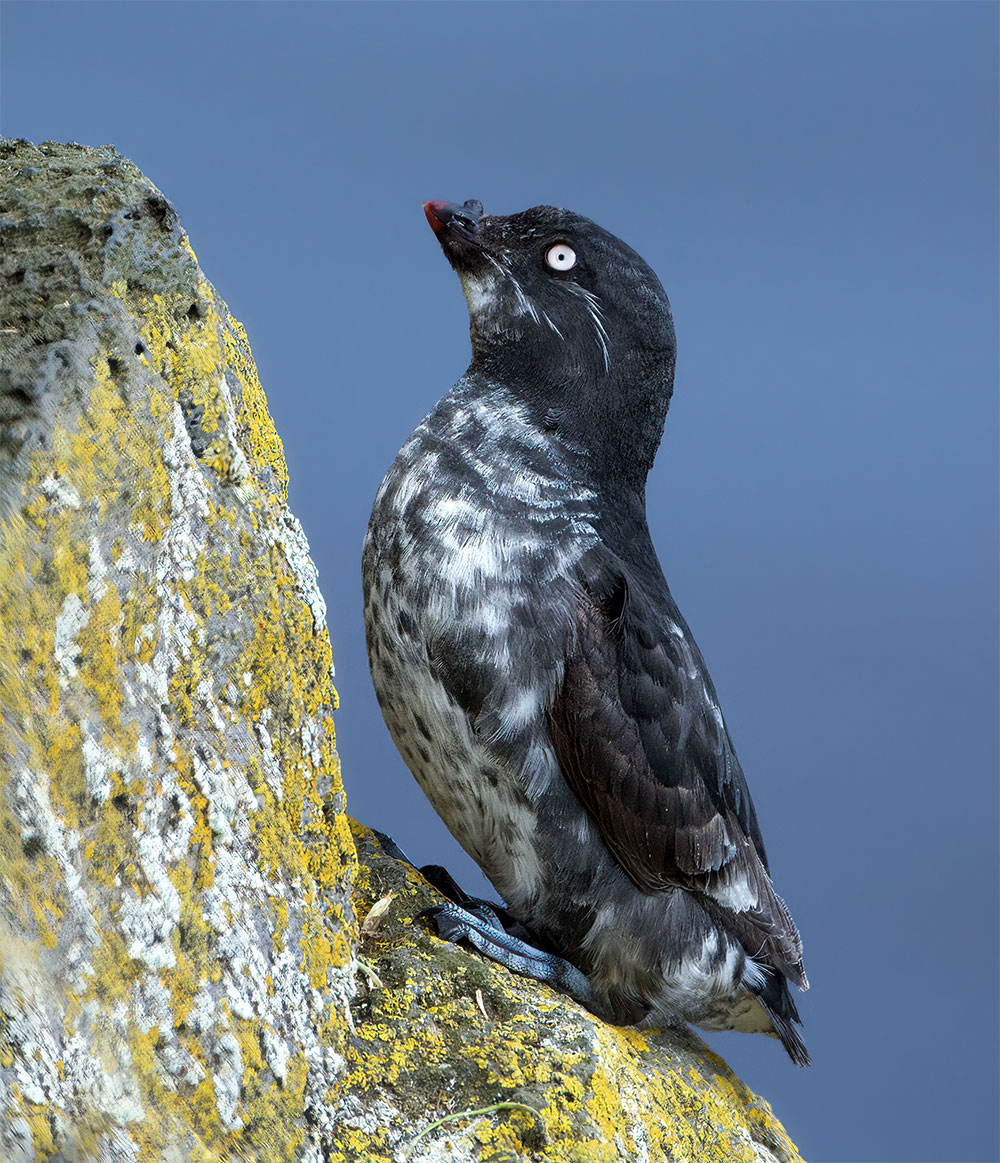
Least Auklet (Aethia pusilla)
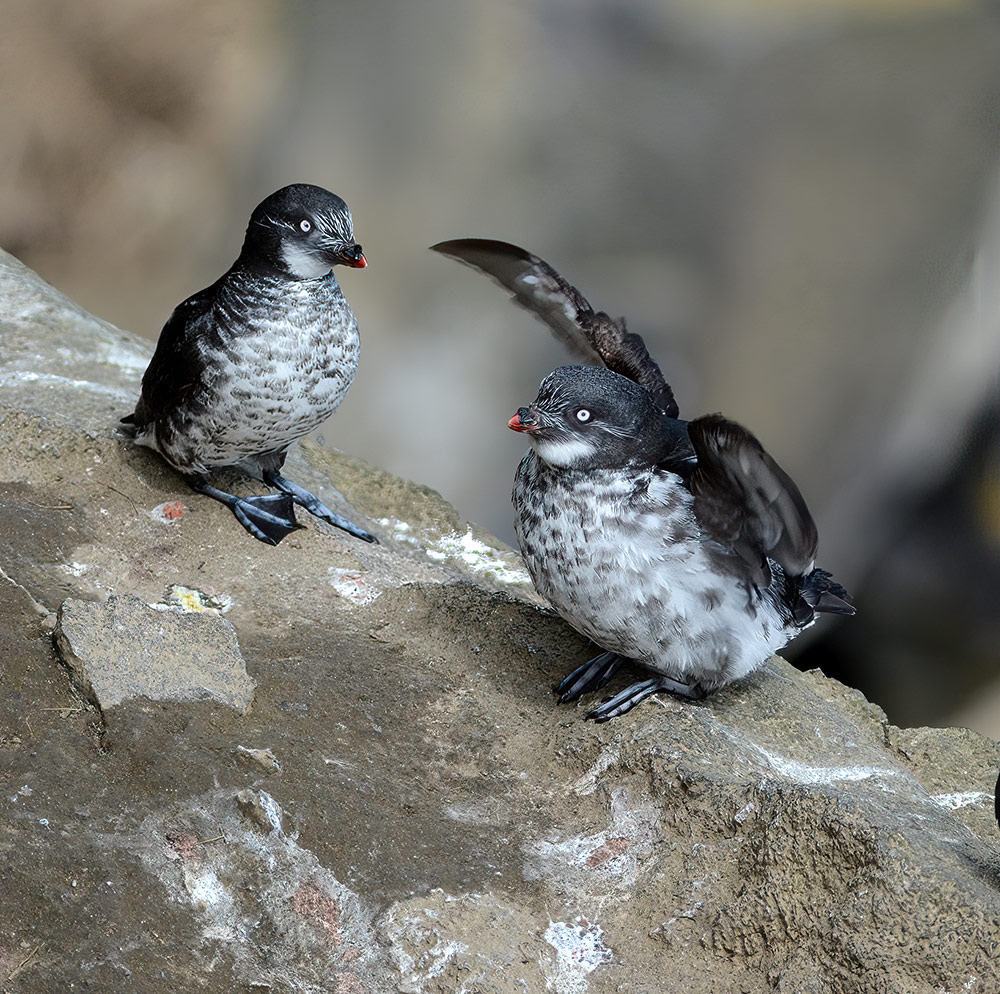
Least Auklet
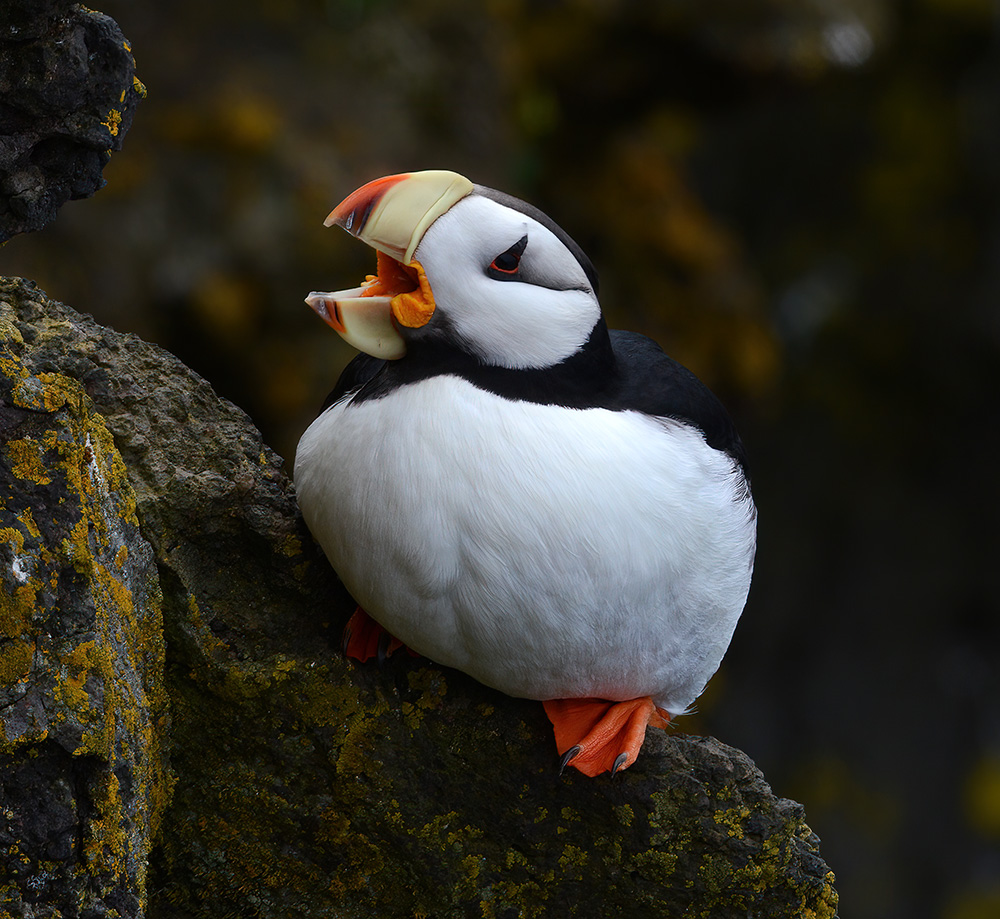
Horned Puffin (Fratercula corniculata)
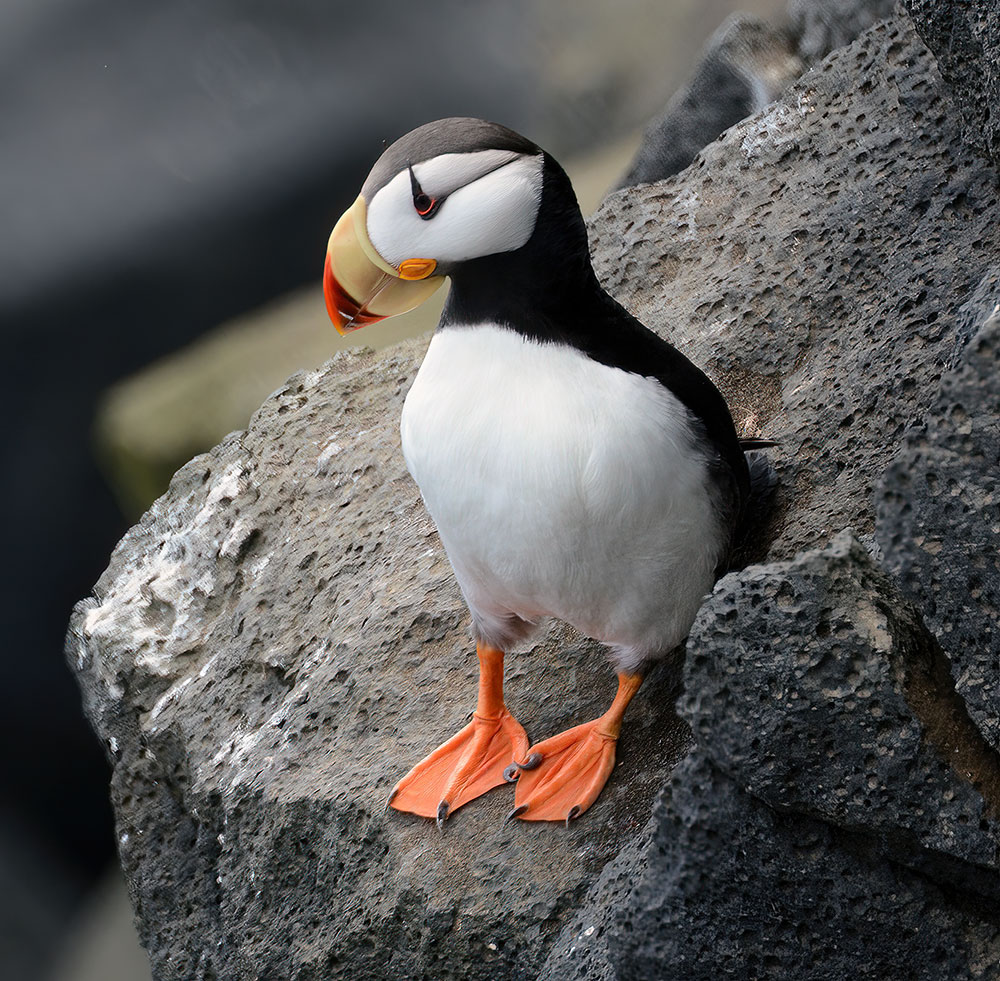
Horned Puffin
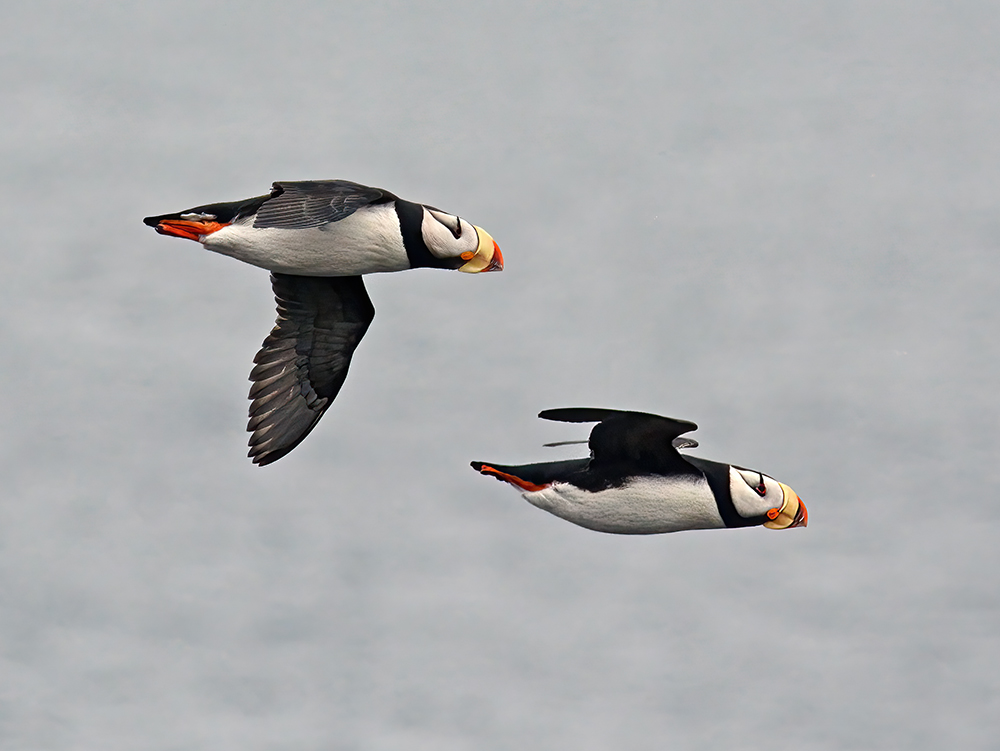
Horned Puffin
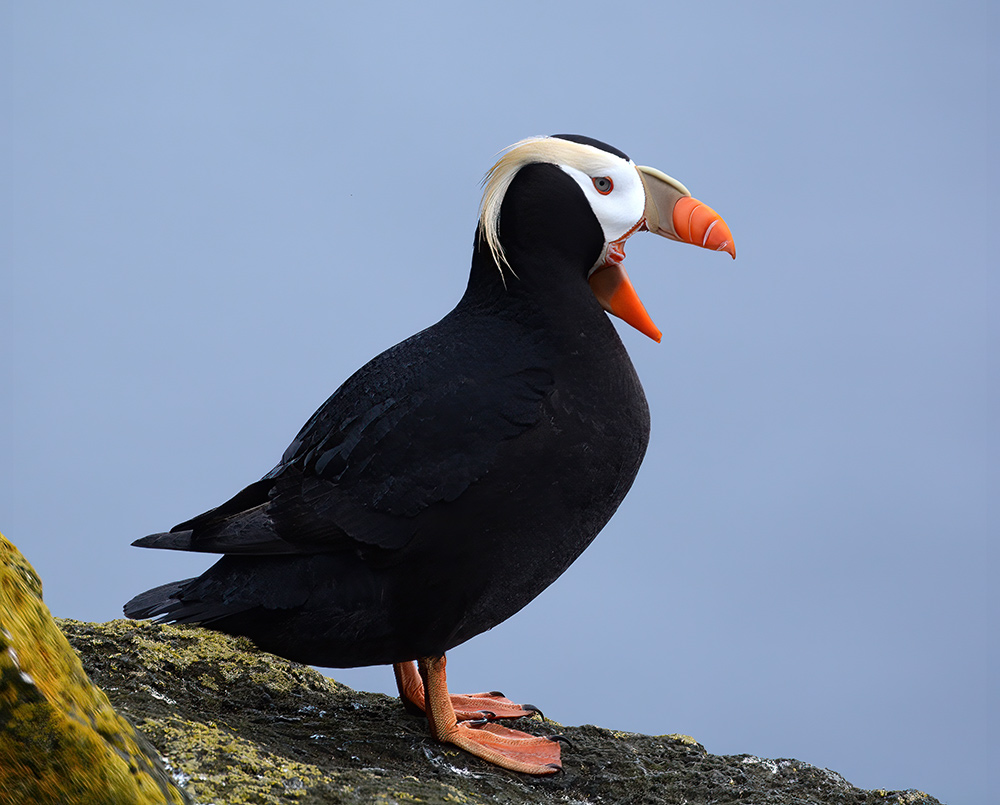
Tufted Puffin (Fratercula cirrhata)
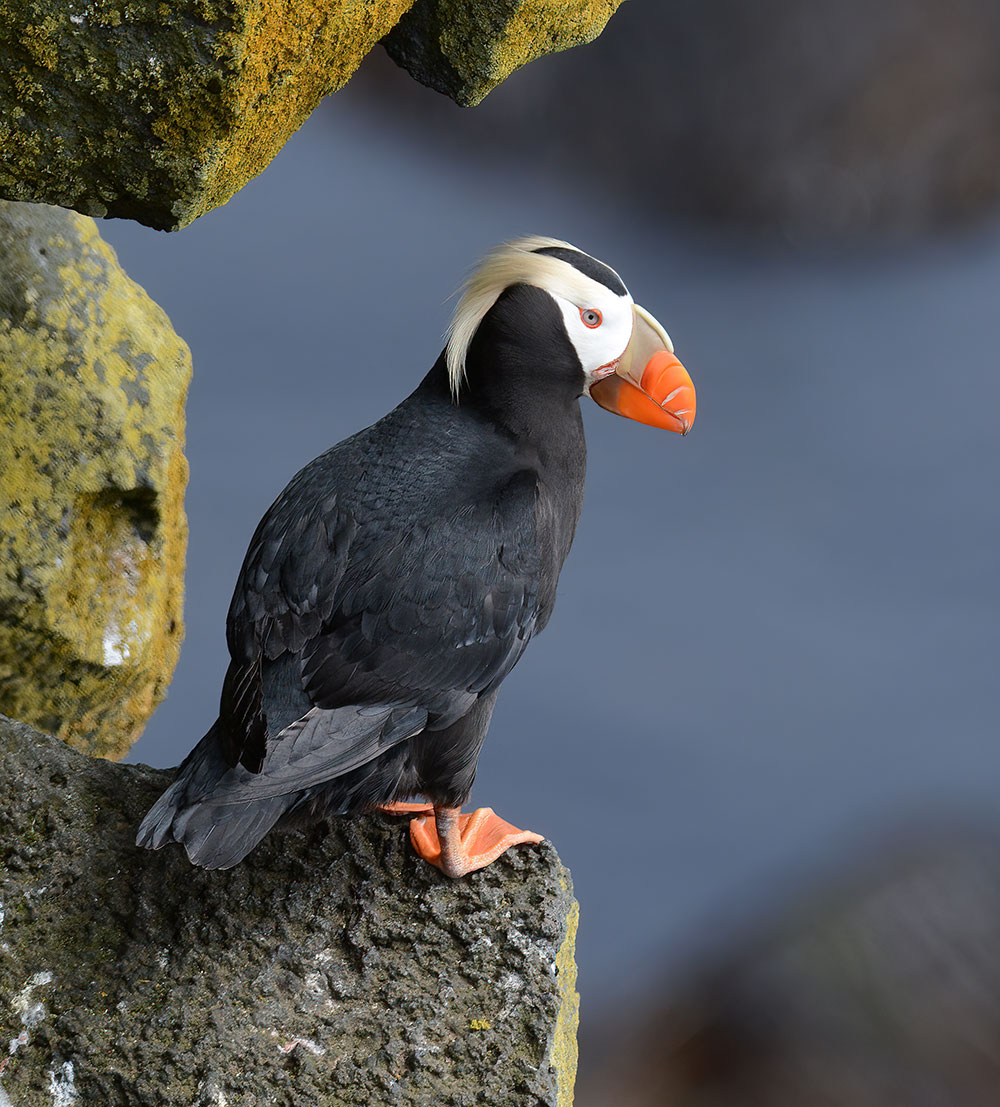
Tufted Puffin
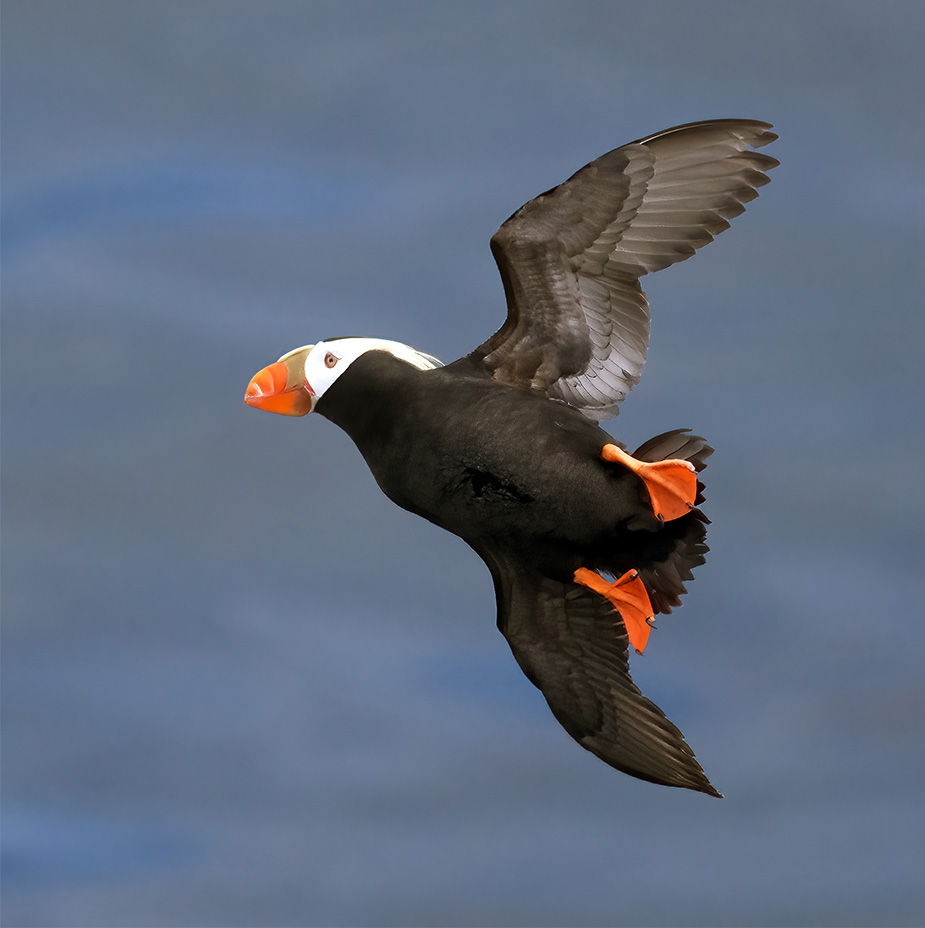
Tufted Puffin
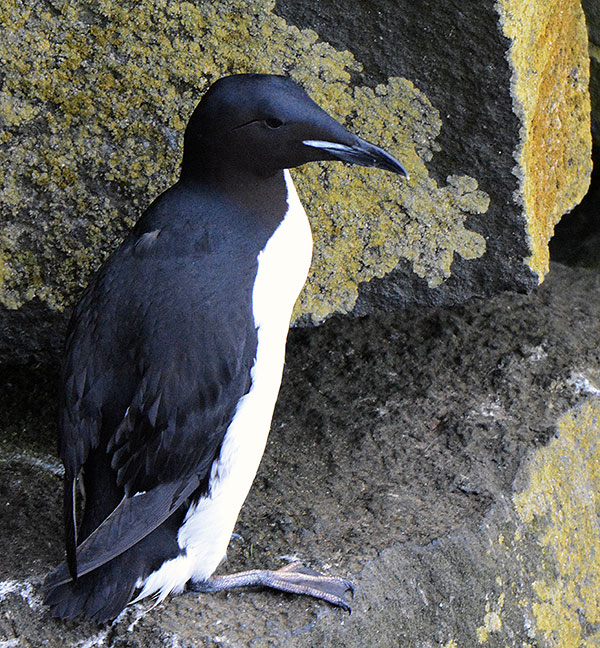
Thick-billed Murre (Uria lomvia). Much more common on St. Paul Island than Common Murre
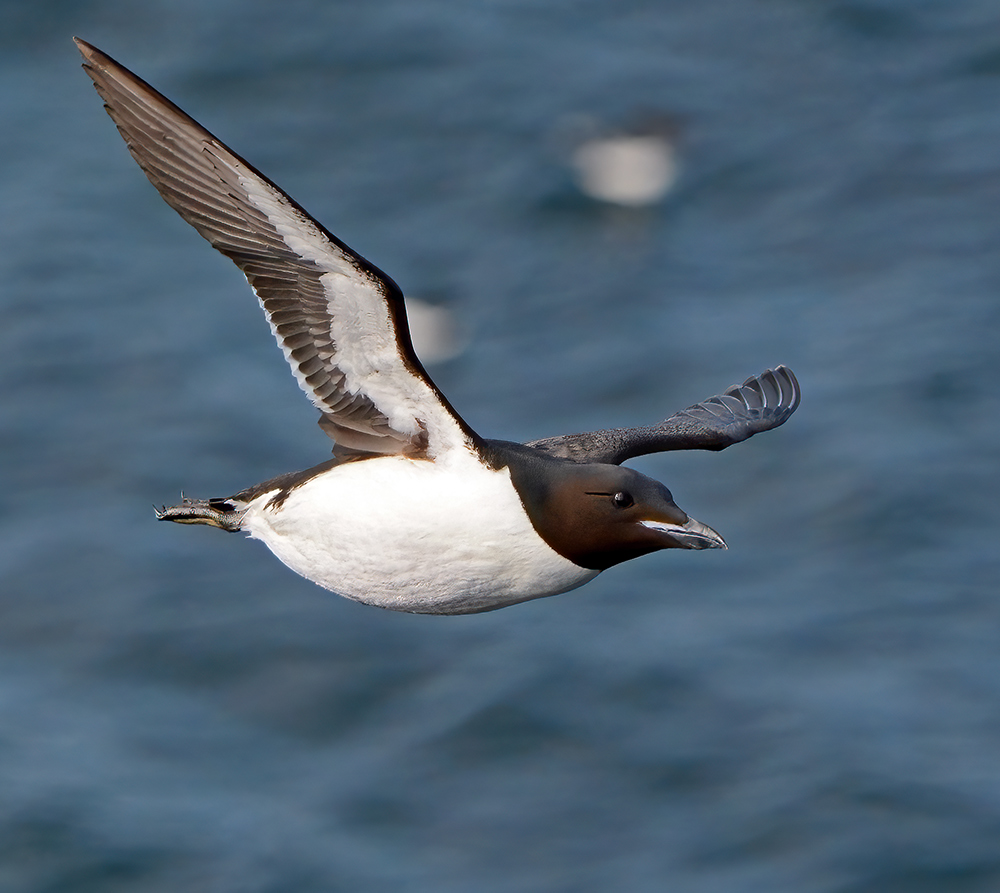
Thick-billed Murre, This species is called Brünnich's Guillemot in Europe
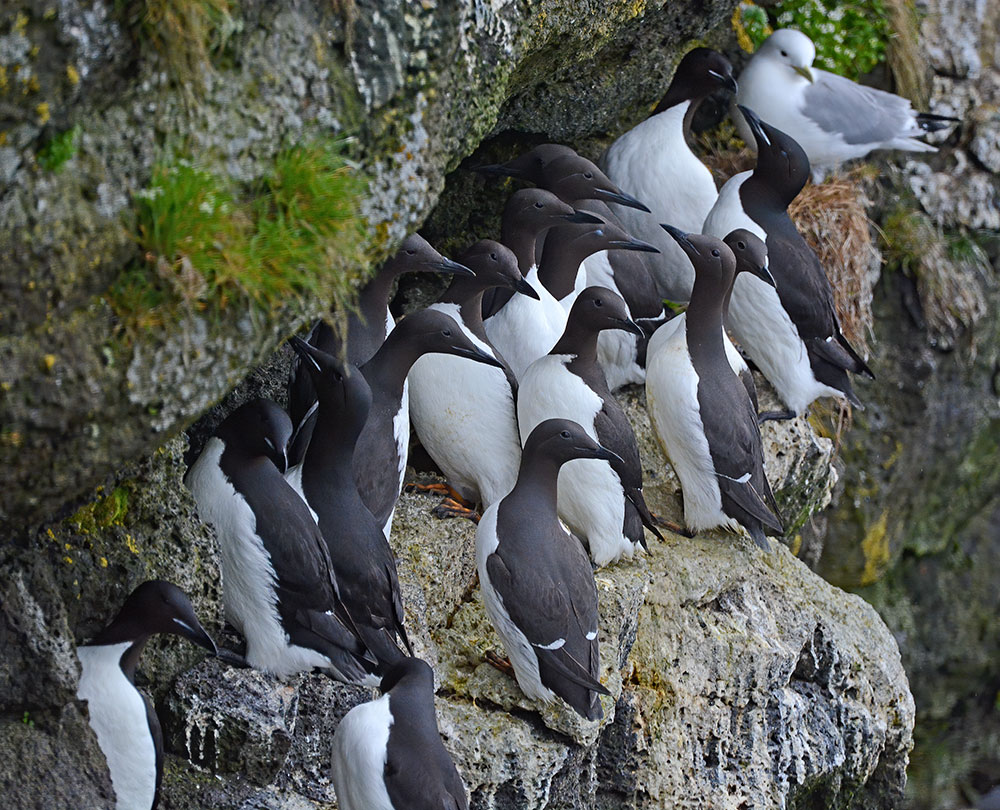
Common and Thick-billed Murre
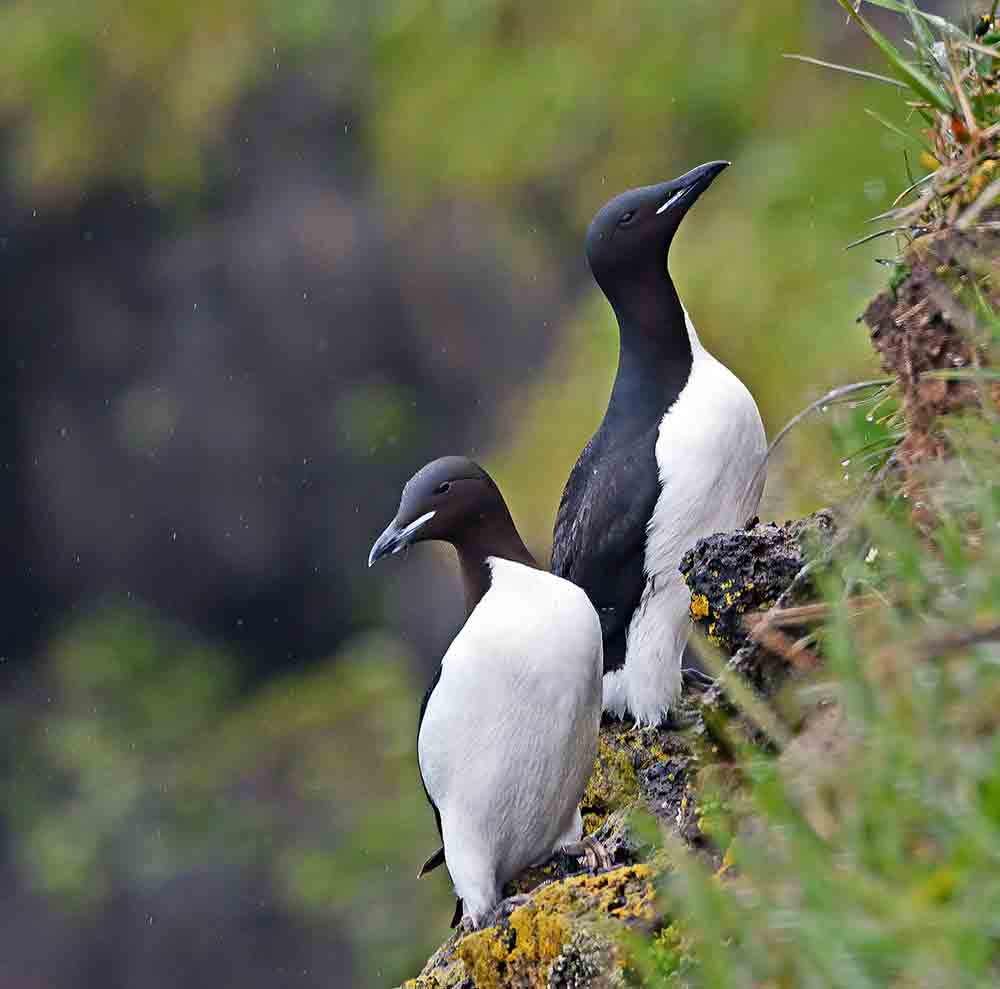
Thick-billed Murre
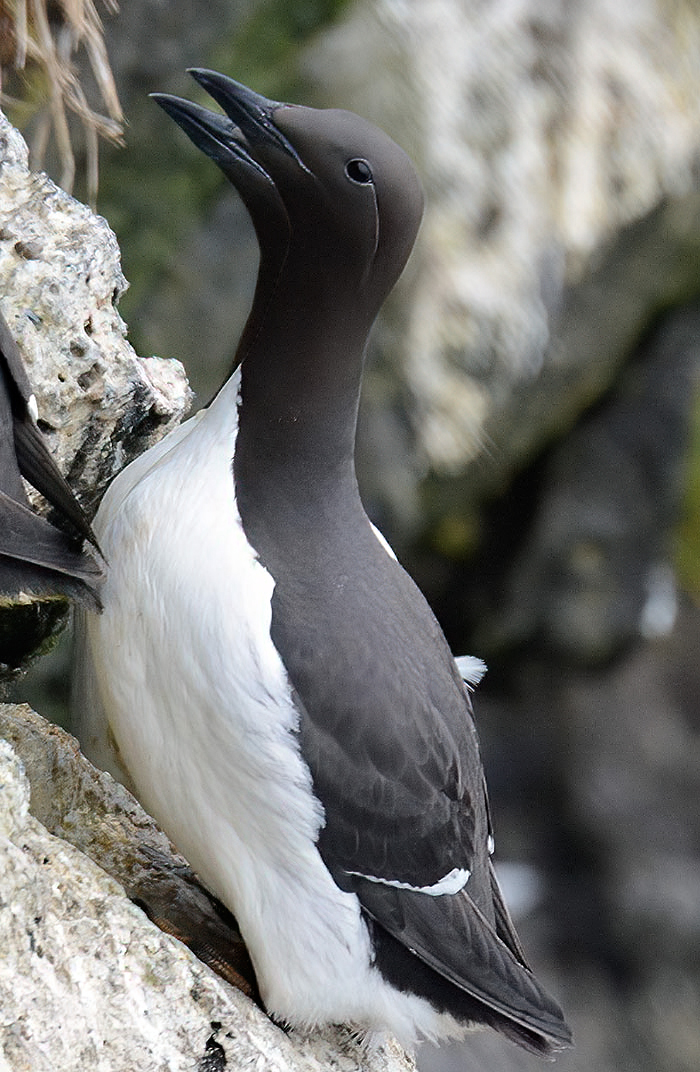
Common Murre (Uria aalge)
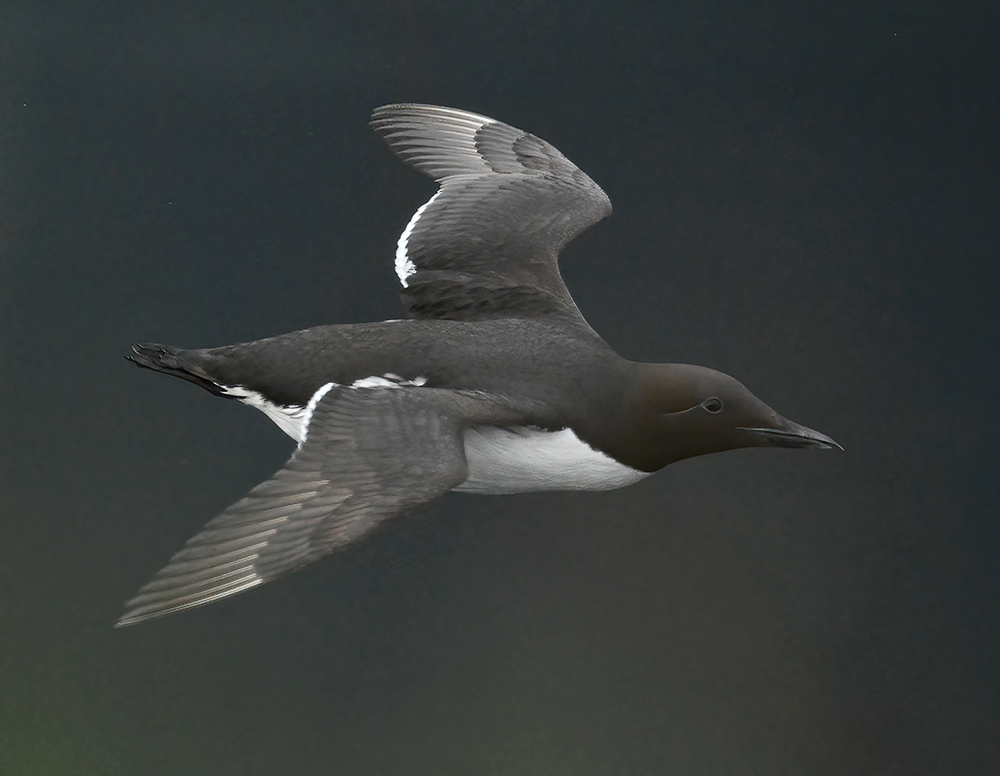
Common Murre
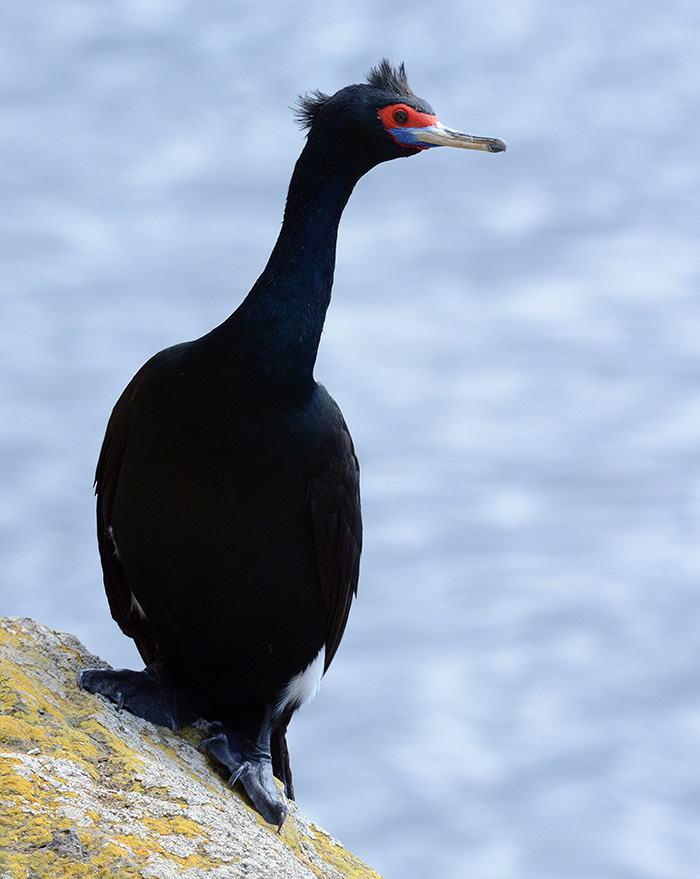
Red-faced Cormorant (Phalacrocorax urile)
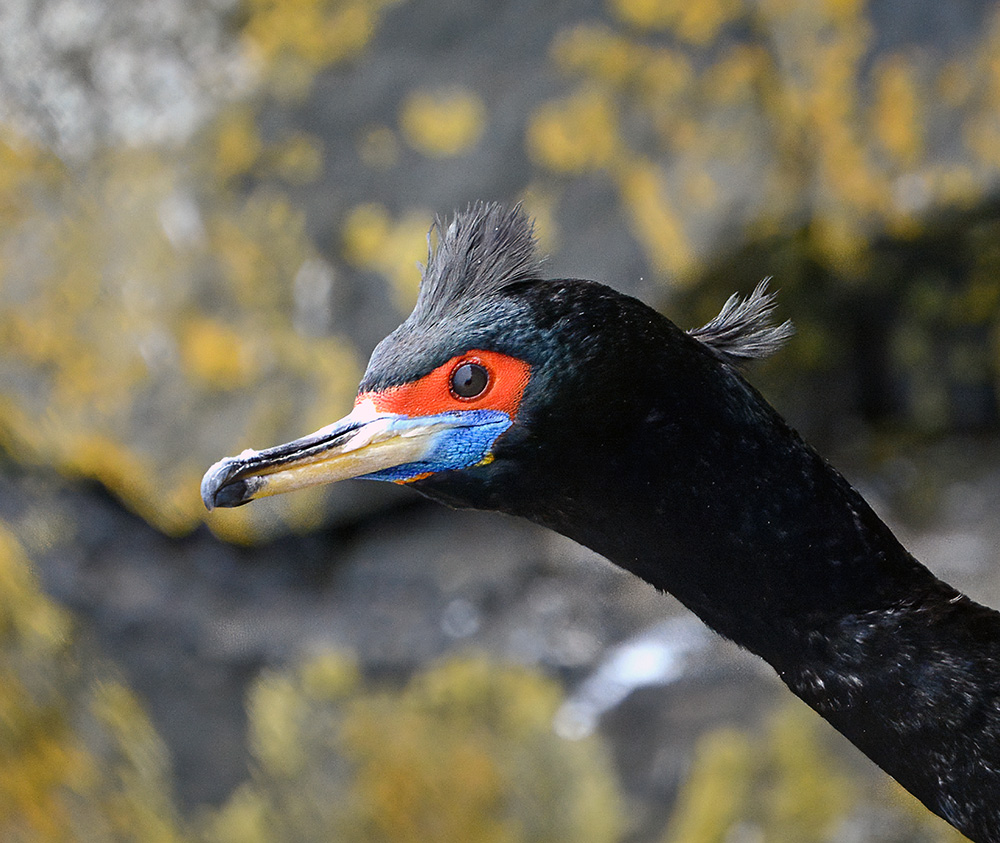
Red-faced Cormorant
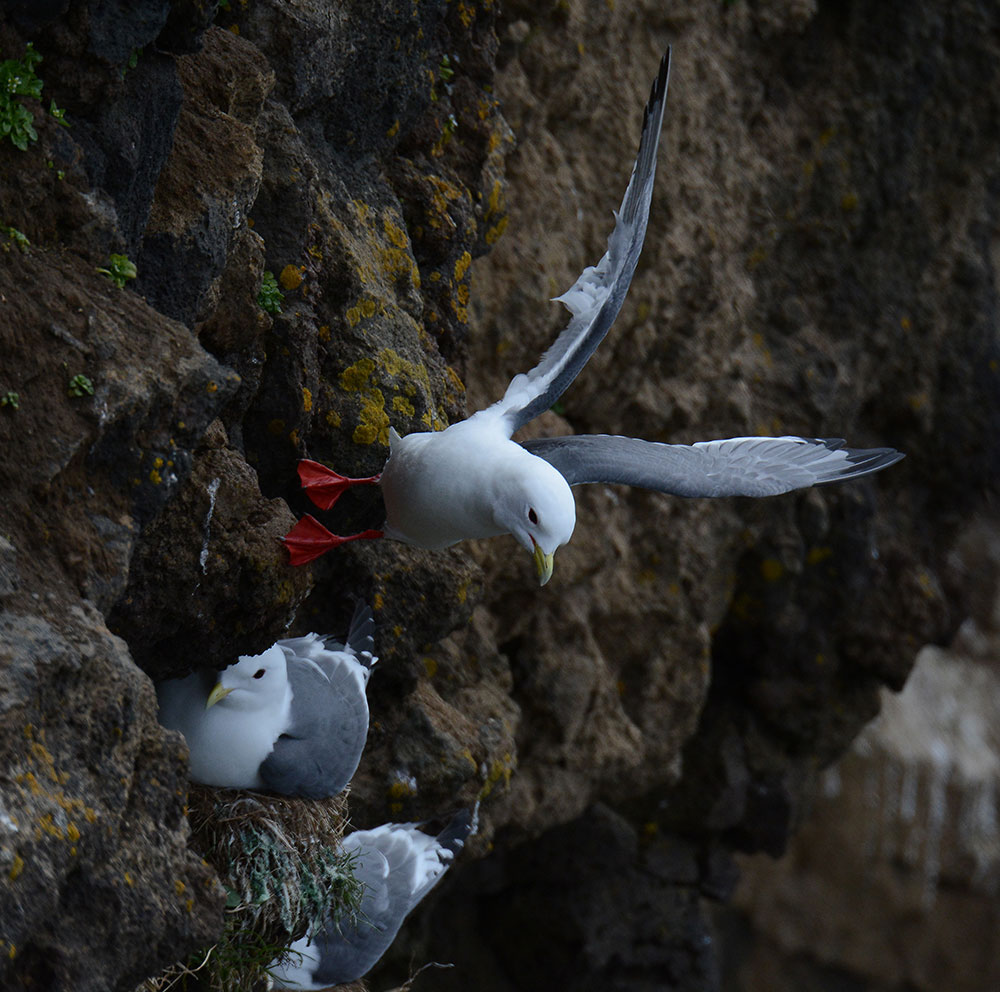
Red-legged Kittiwake (Rissa brevirostris)
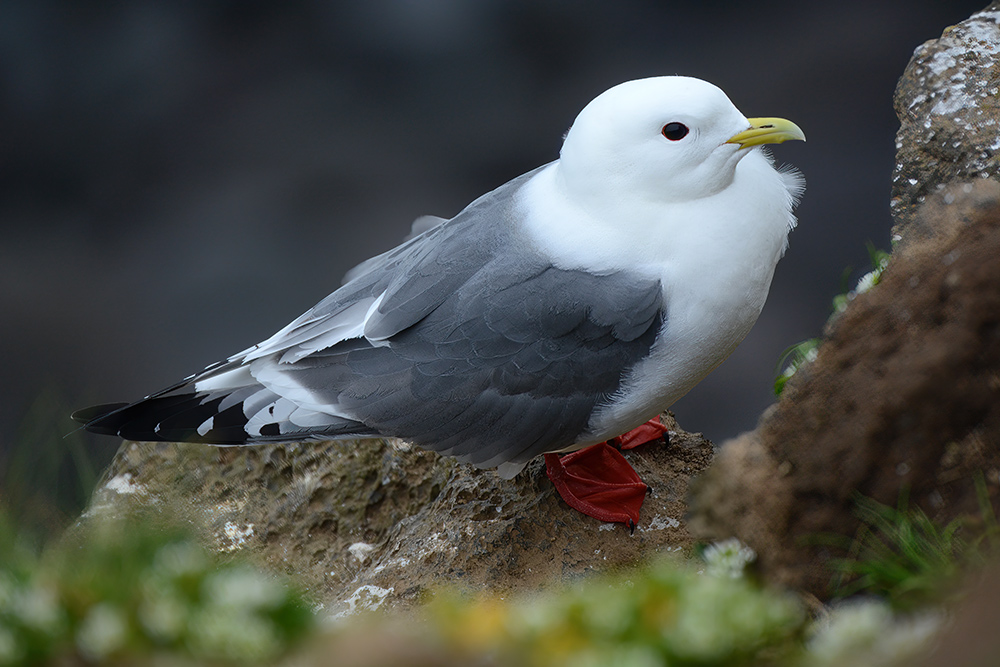
Red-legged Kittiwake
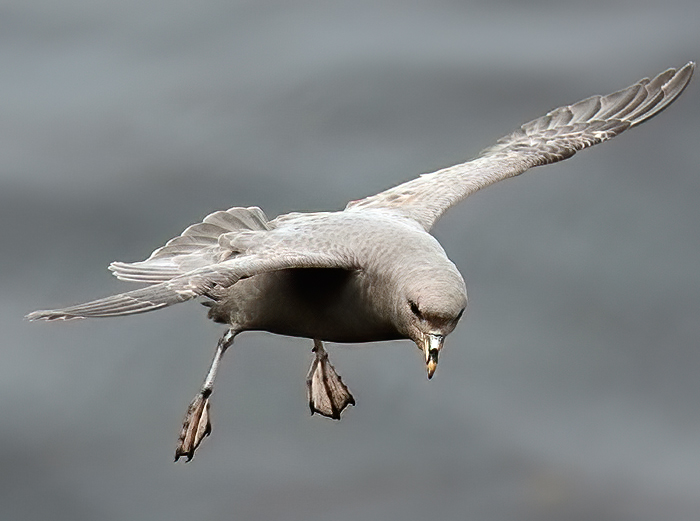
Northern Fulmar, dark morph (Fulmarus glacialis)
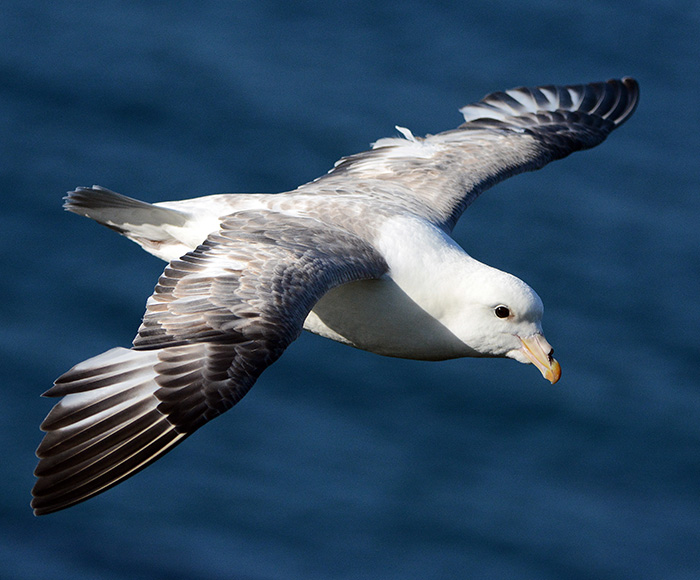
Northern Fulmar, light morph
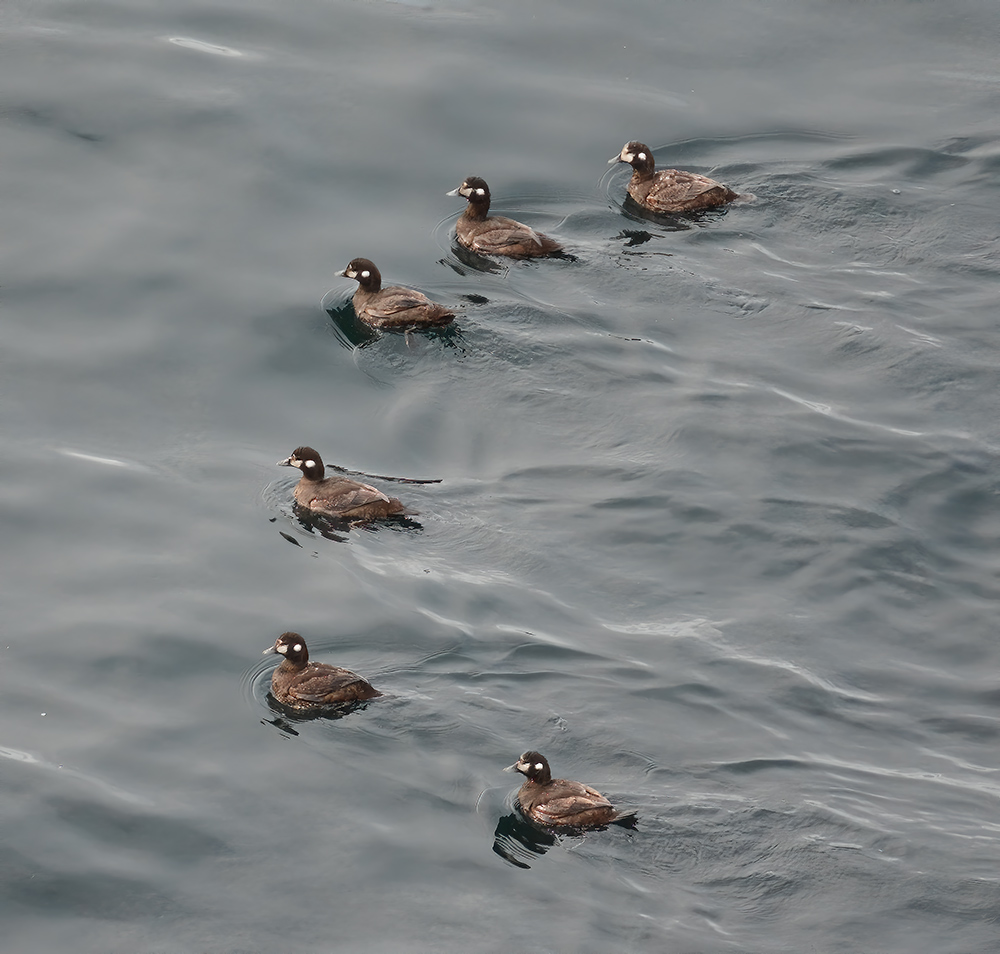
Harlequin Duck (Histrionicus histrionicus)
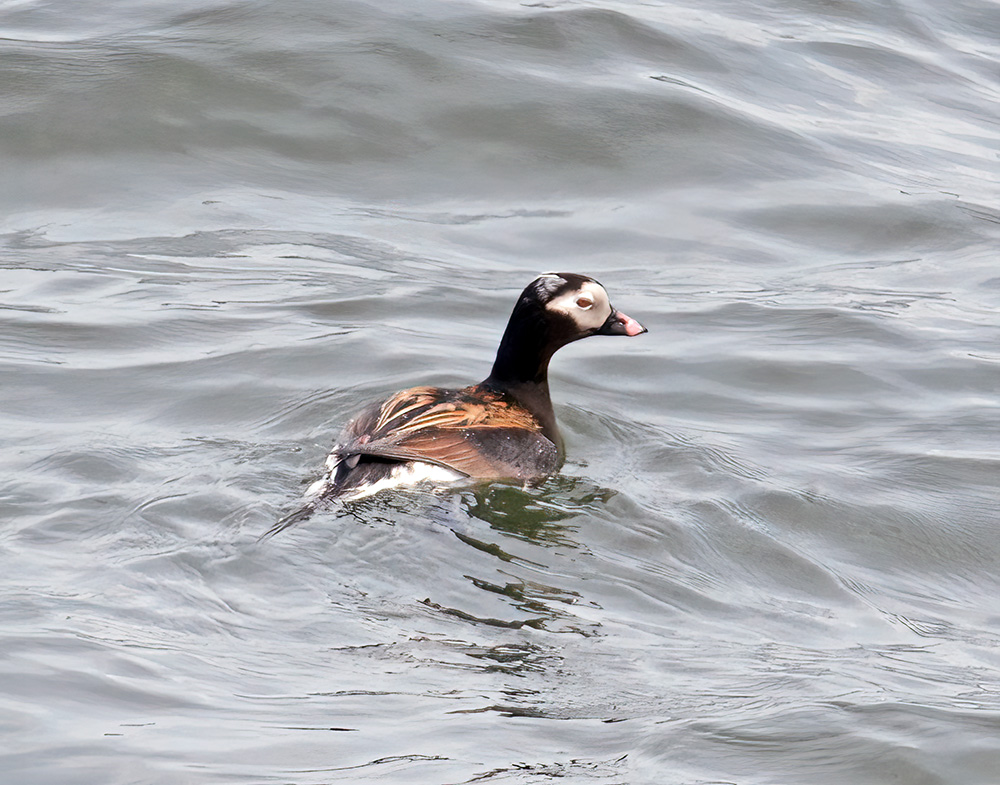
Long-tailed Duck (Clangula hyemalis)
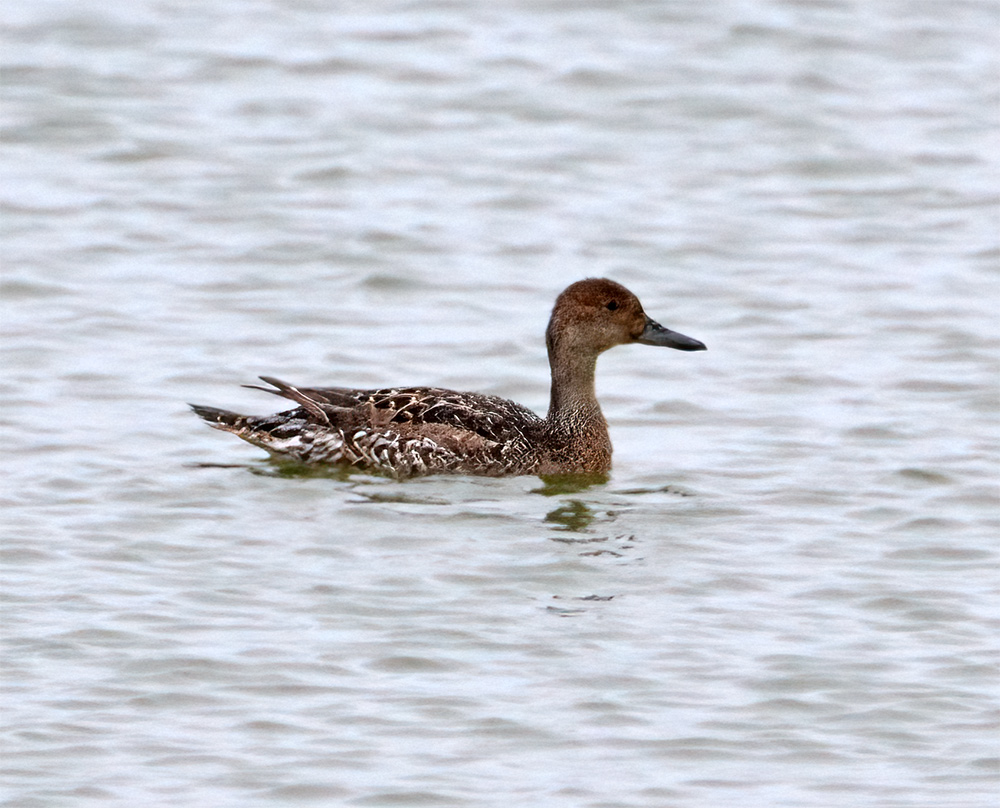
Female Northern Pintail (Anas acuta)
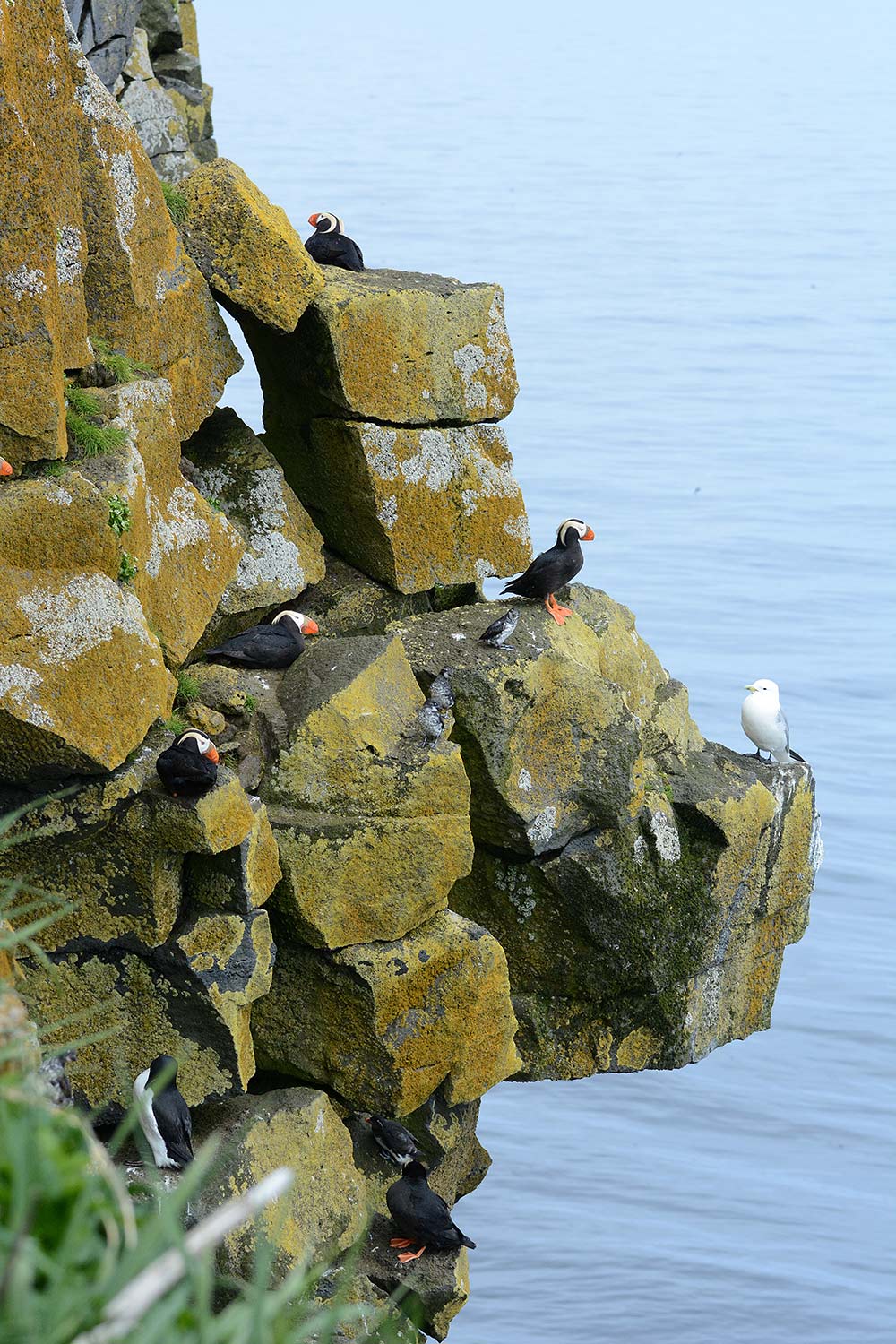
Notice how small the Least Auklet is compared to the Tufted Puffin!
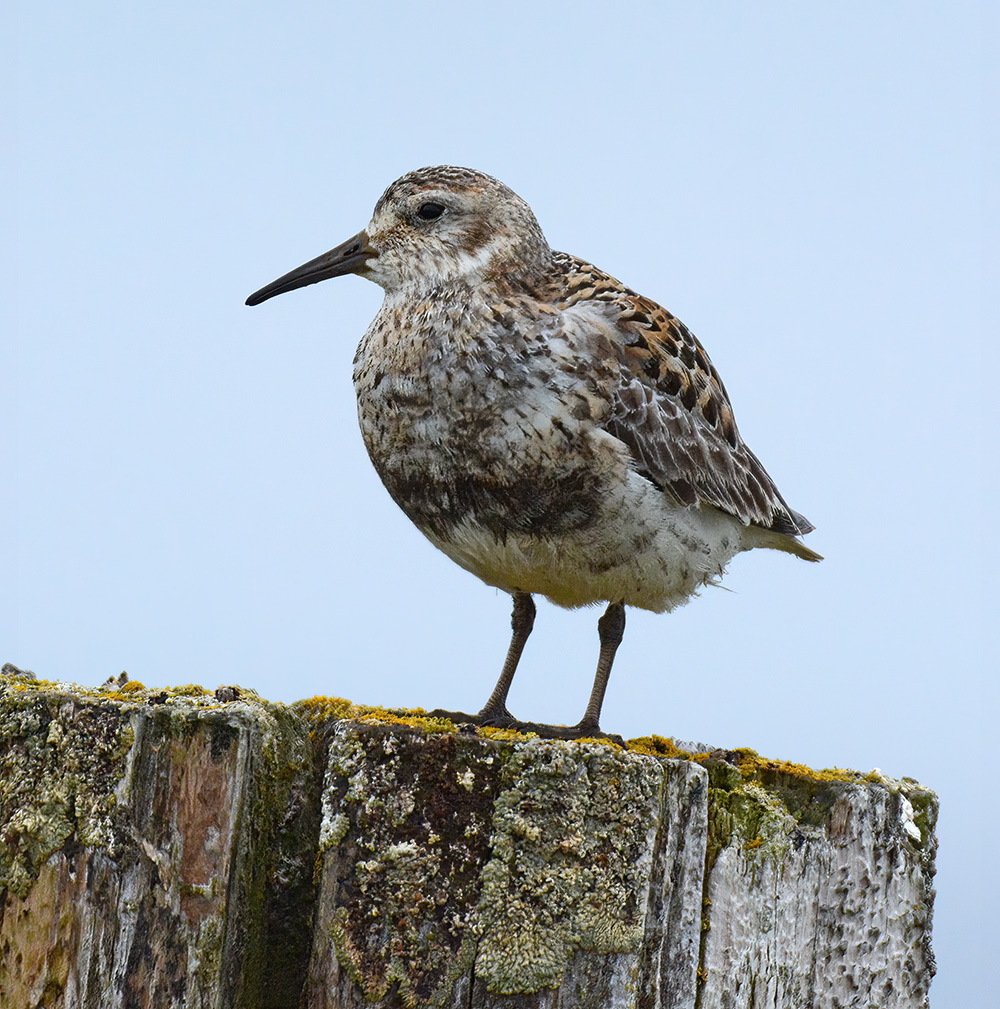
Rock Sandpiper (Calidris ptilocnemis)
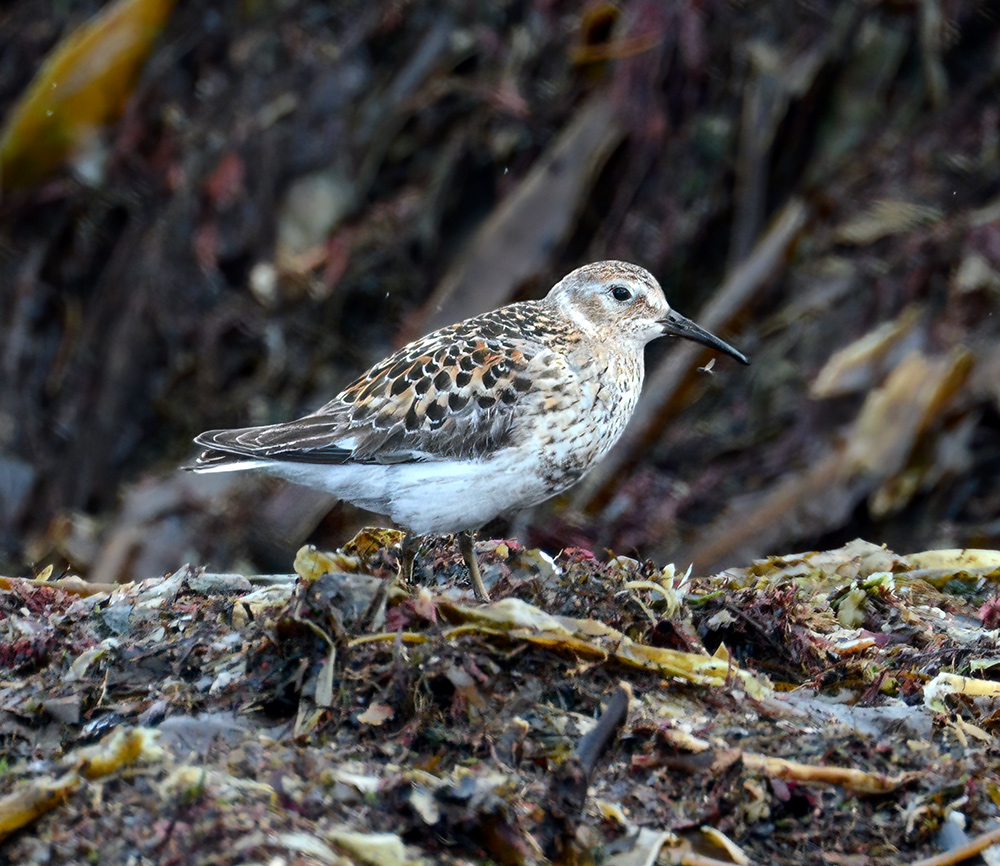
Rock Sandpiper
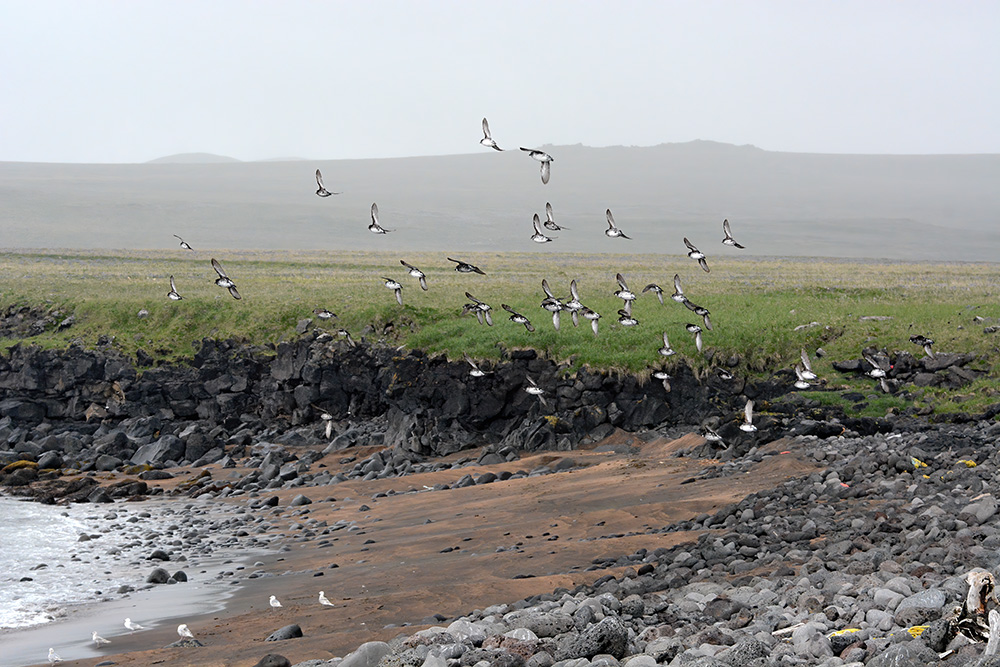
Least Auklet

Bad weather
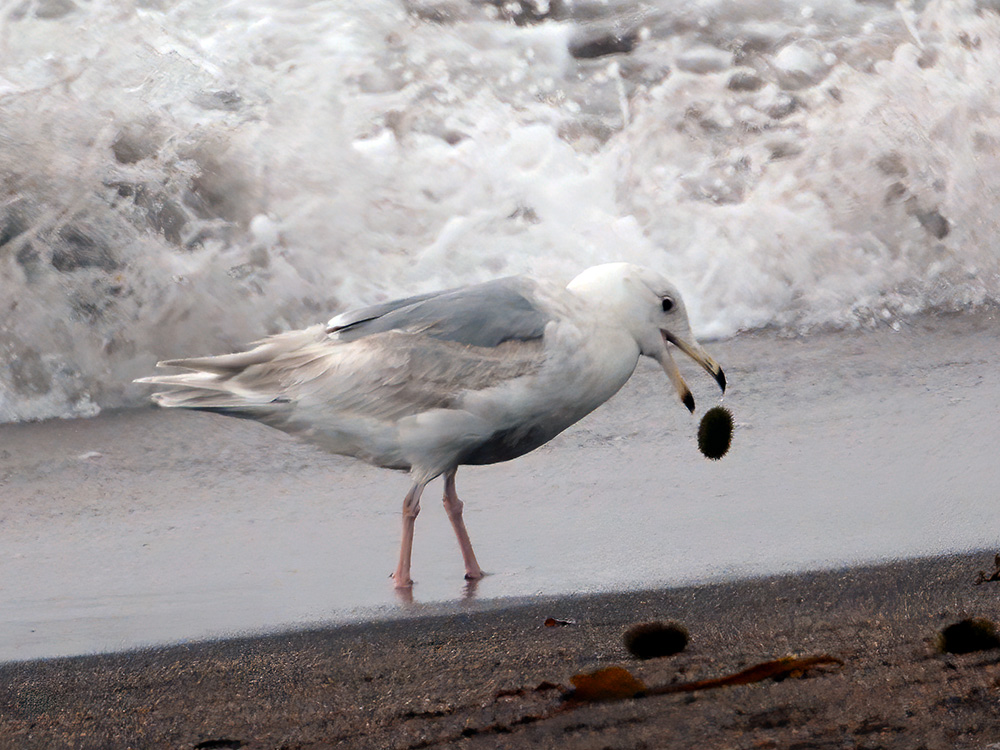
Immature Glaucous-winged Gull with a sea urchin
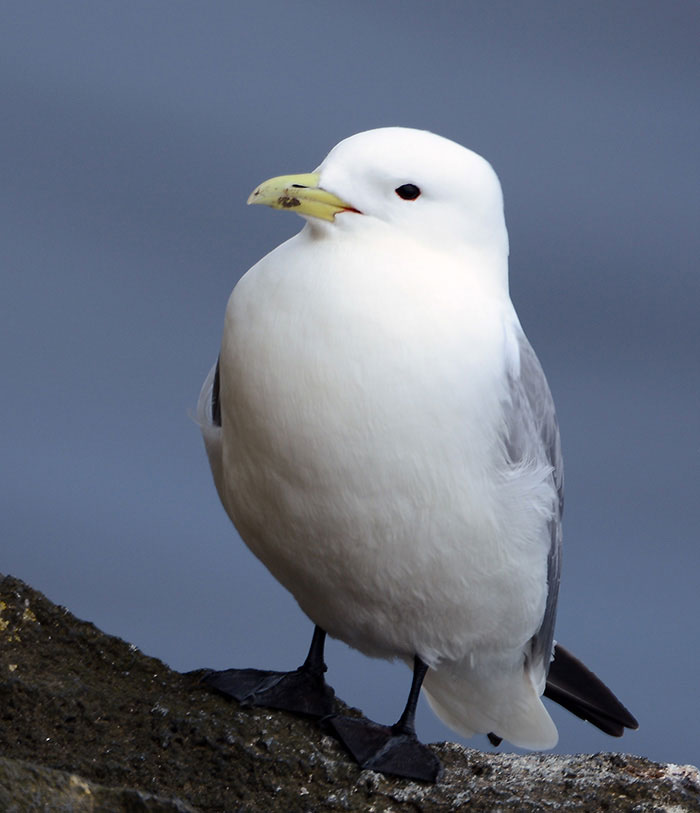
Black-legged Kittiwake (Rissa tridactyla)
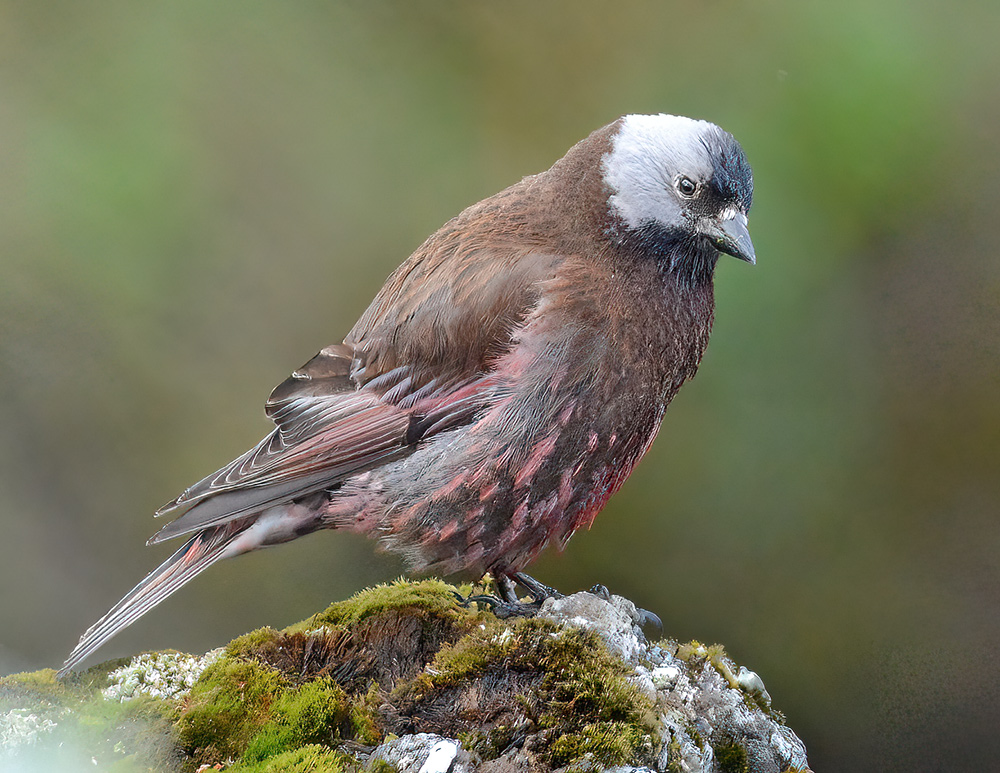
Gray-crowned Rosy-Finch (Leucosticte tephrocotis)
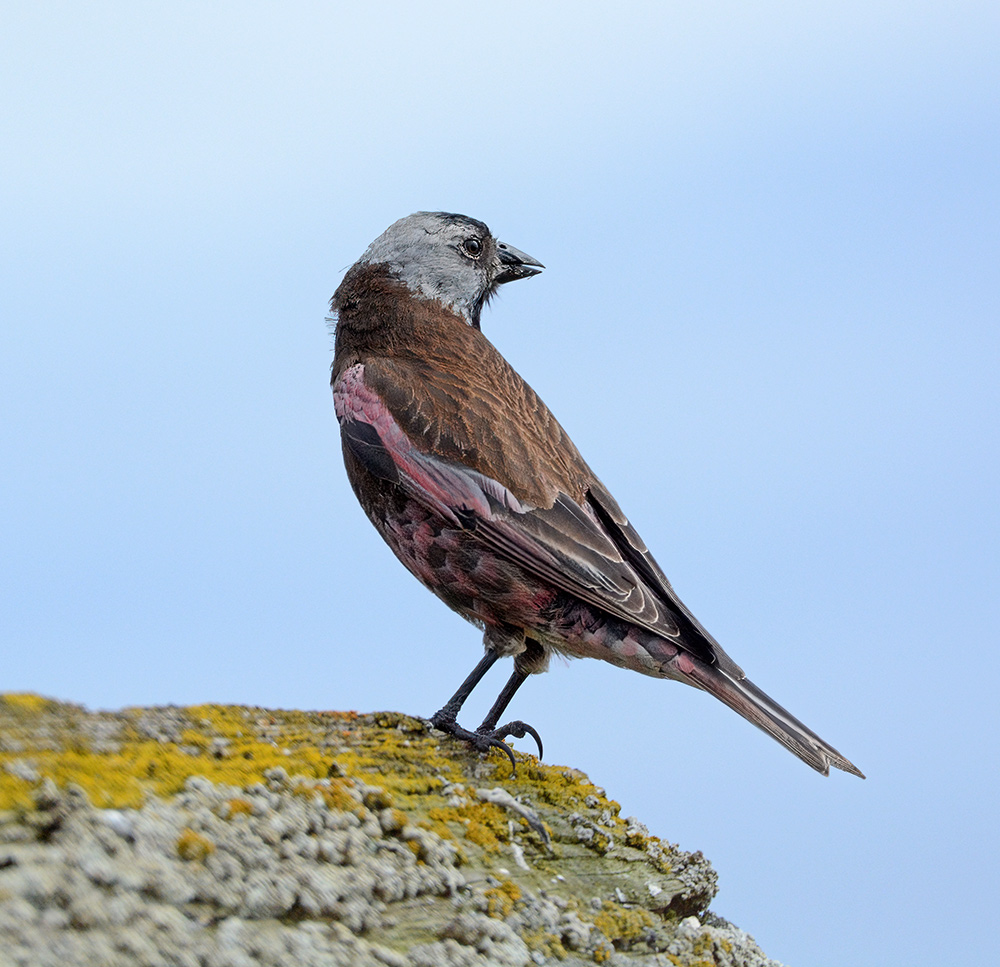
Gray-crowned Rosy-Finch
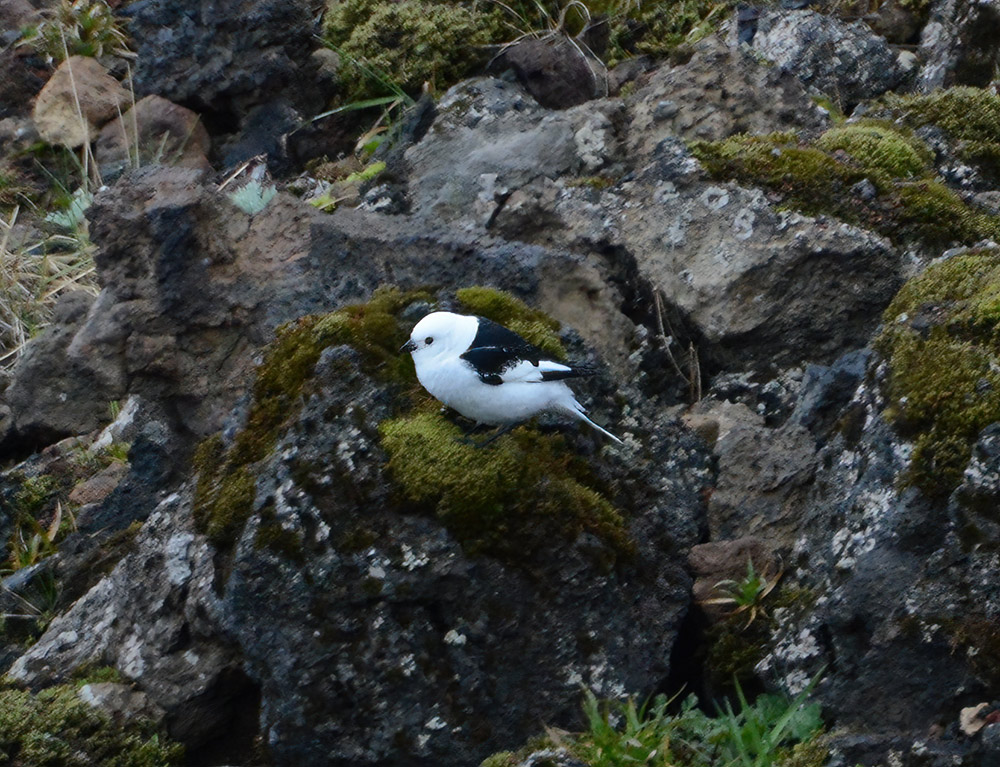
Snow Bunting (Plectrophenax nivalis)
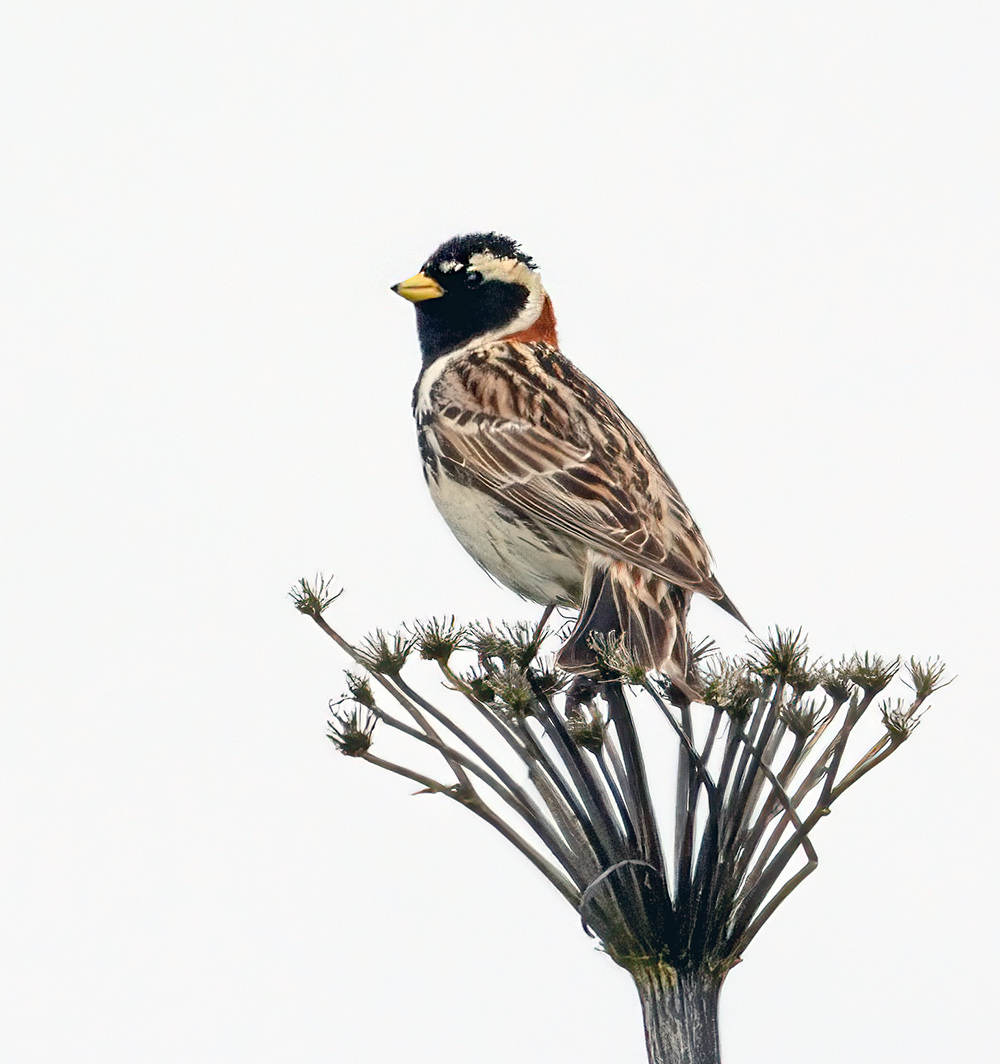
Lapland Longspur (Calcarius lapponicus)
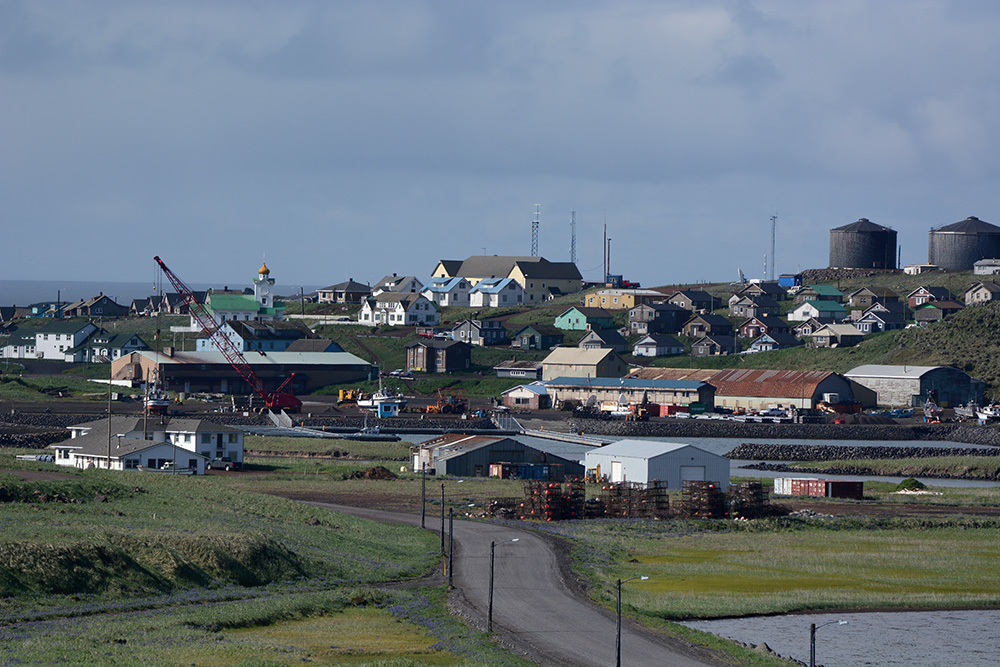
St. Paul village
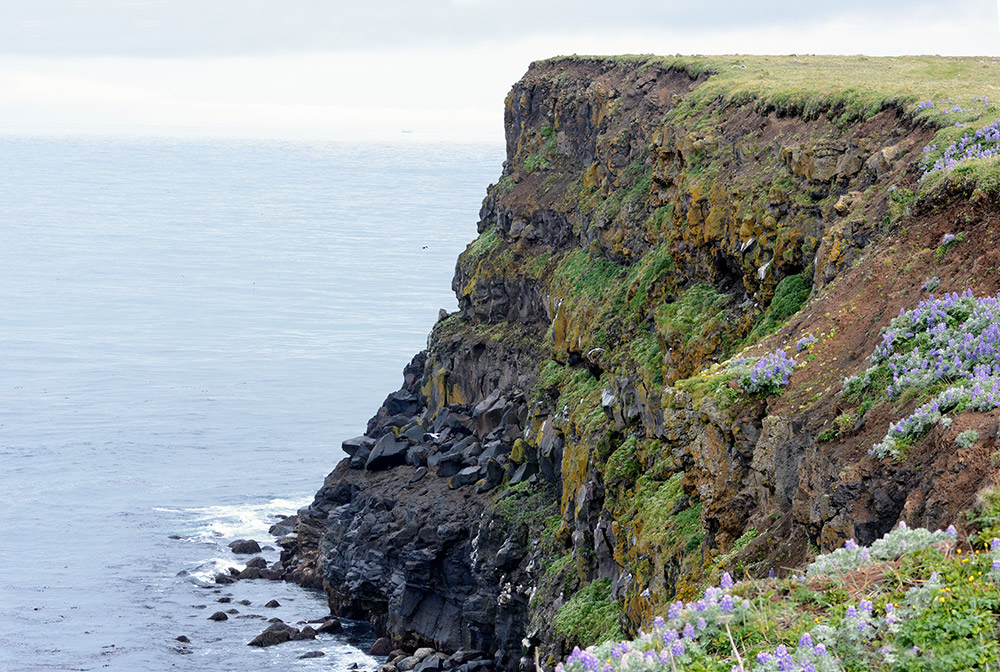
Bird cliffs, St. Paul Island
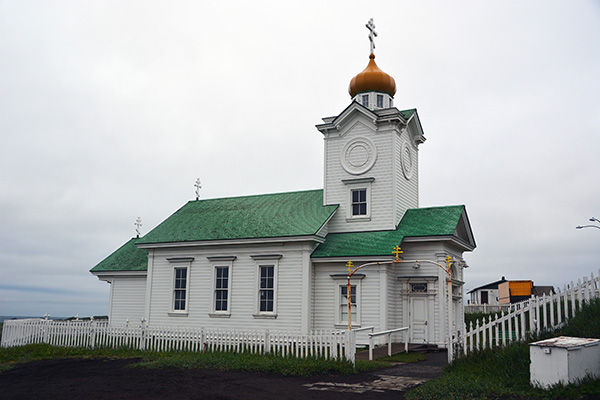
Russian orthodox church
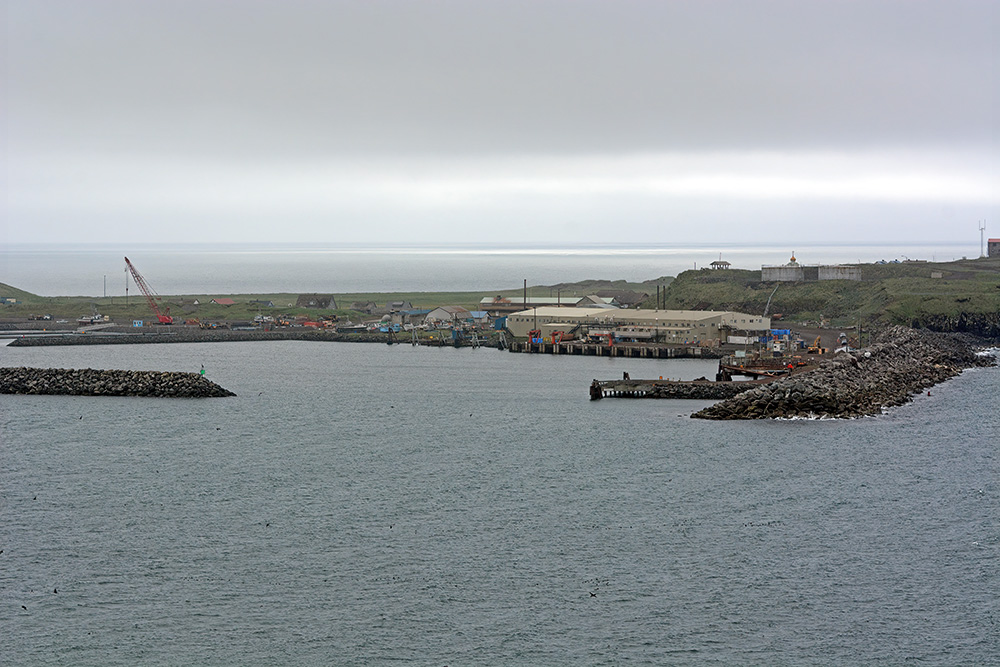
Trident Fish Factory, where we had all our meals. The food was very good, by the way
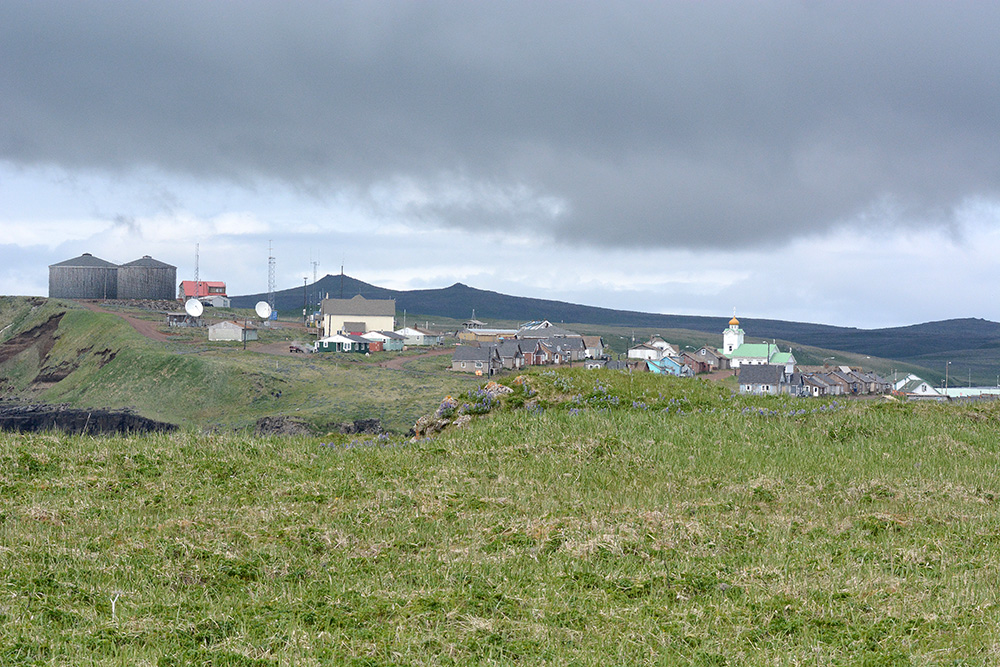
St. Paul Island
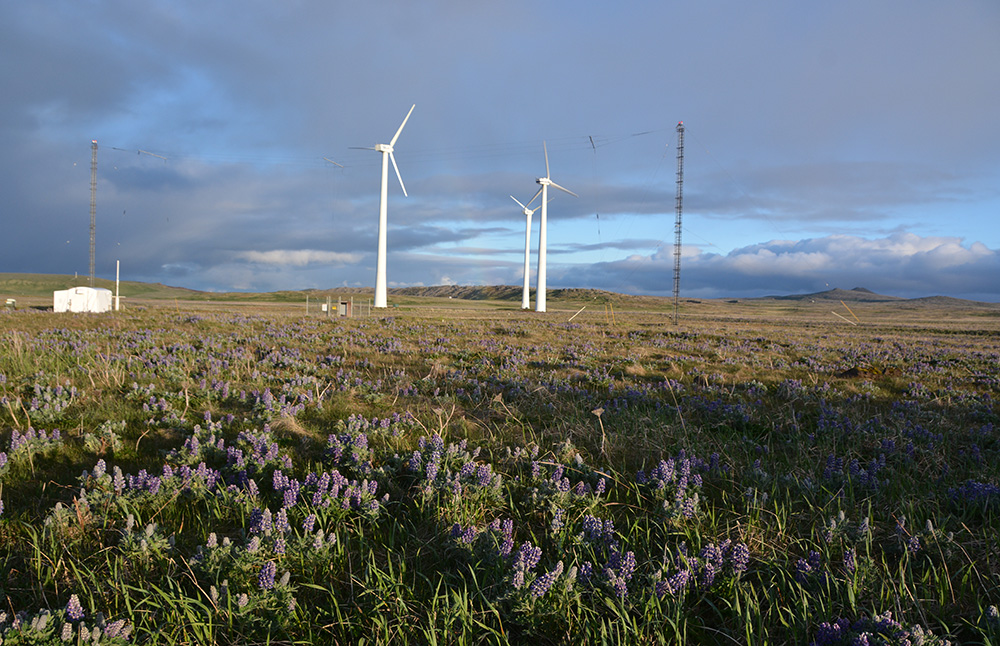
Windmills on St. Paul Island
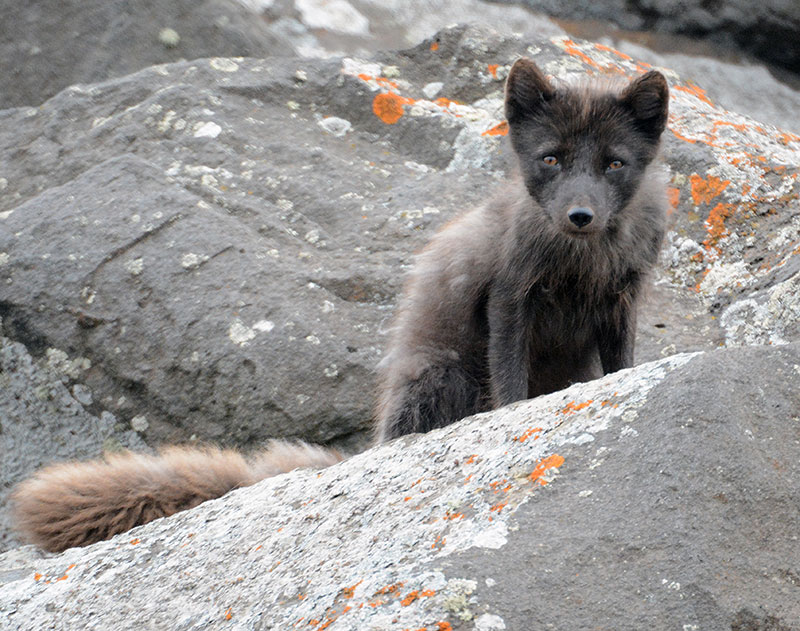
Arctic Fox (Vulpes lagopus)
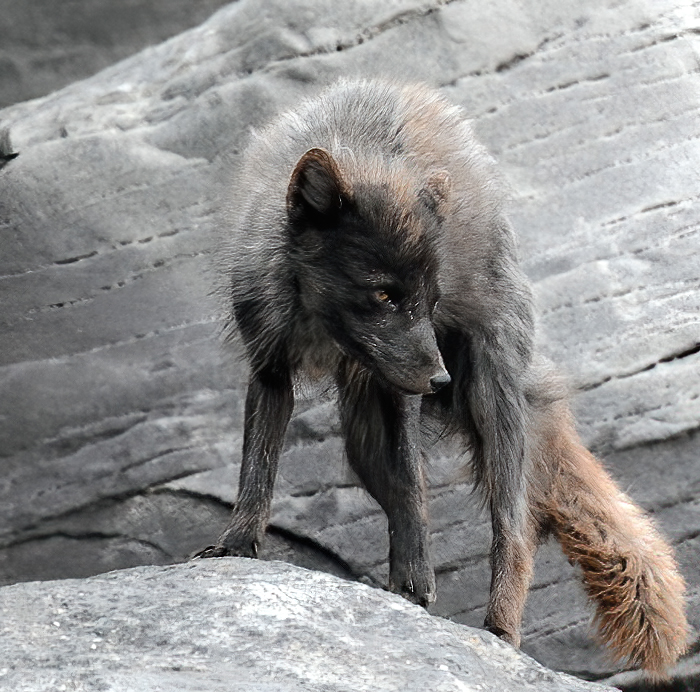
Arctic Fox
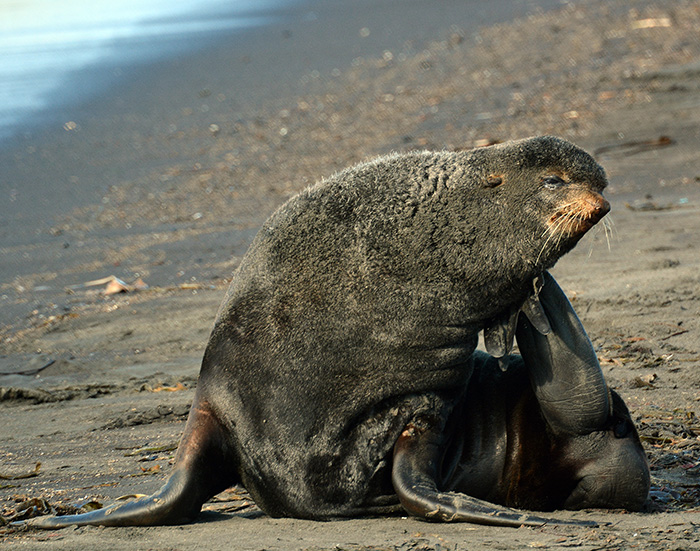
Northern Fur Seal (Callorhinus ursinus) bull
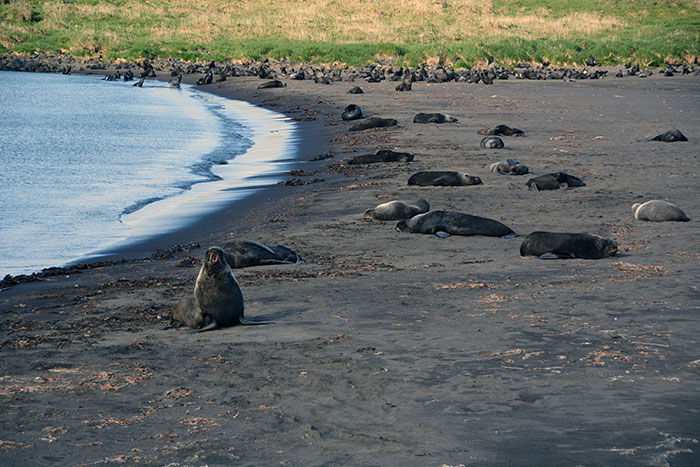
Northern Fur Seal colony. Only males were onshore at this period
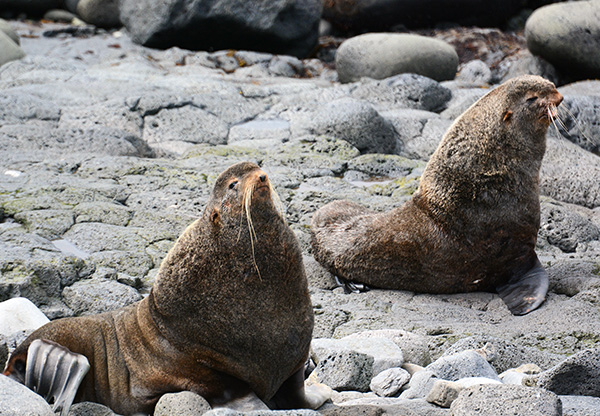
Northern Fur Seal bulls
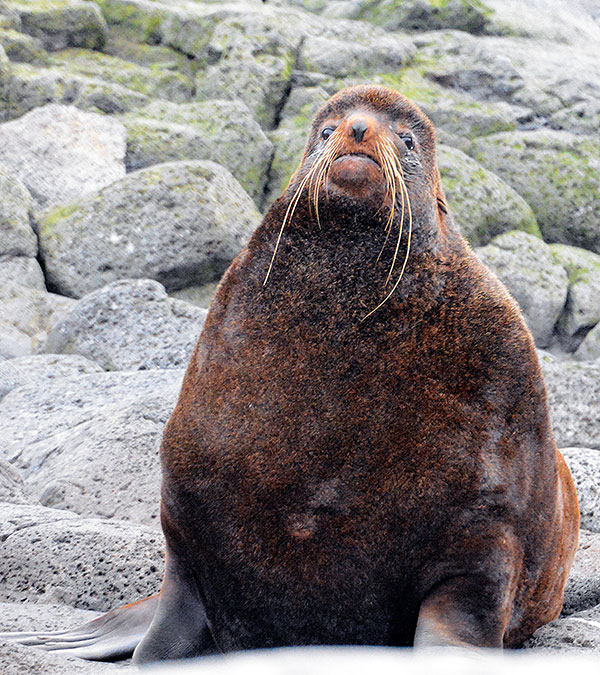
The bulls can weigh up to 275 kg, and can be dangerous for people coming too close
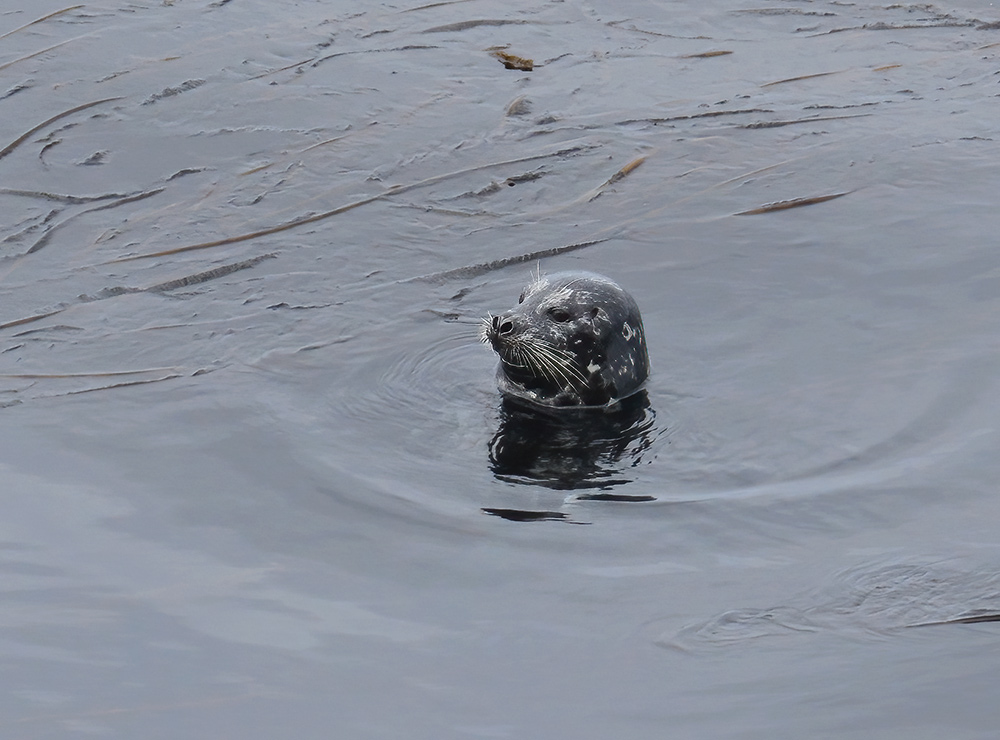
Pacific Harbor Seal (Phoca vitulina ssp. richardsi)
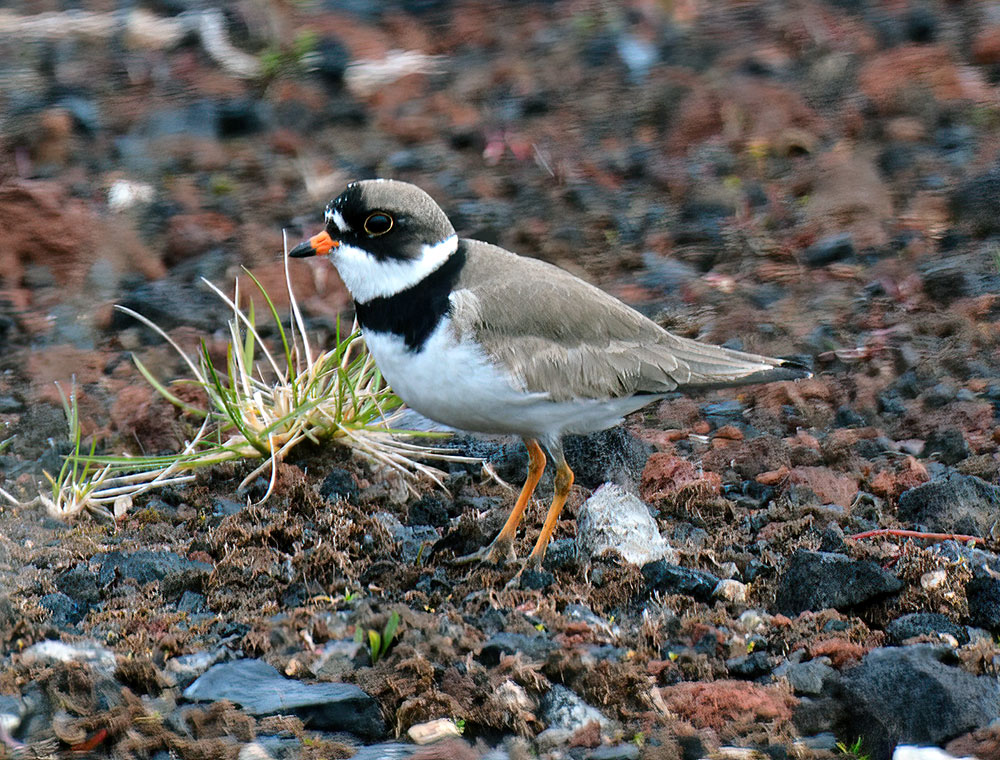
Semipalmated Plover (Charadrius semipalmatus)
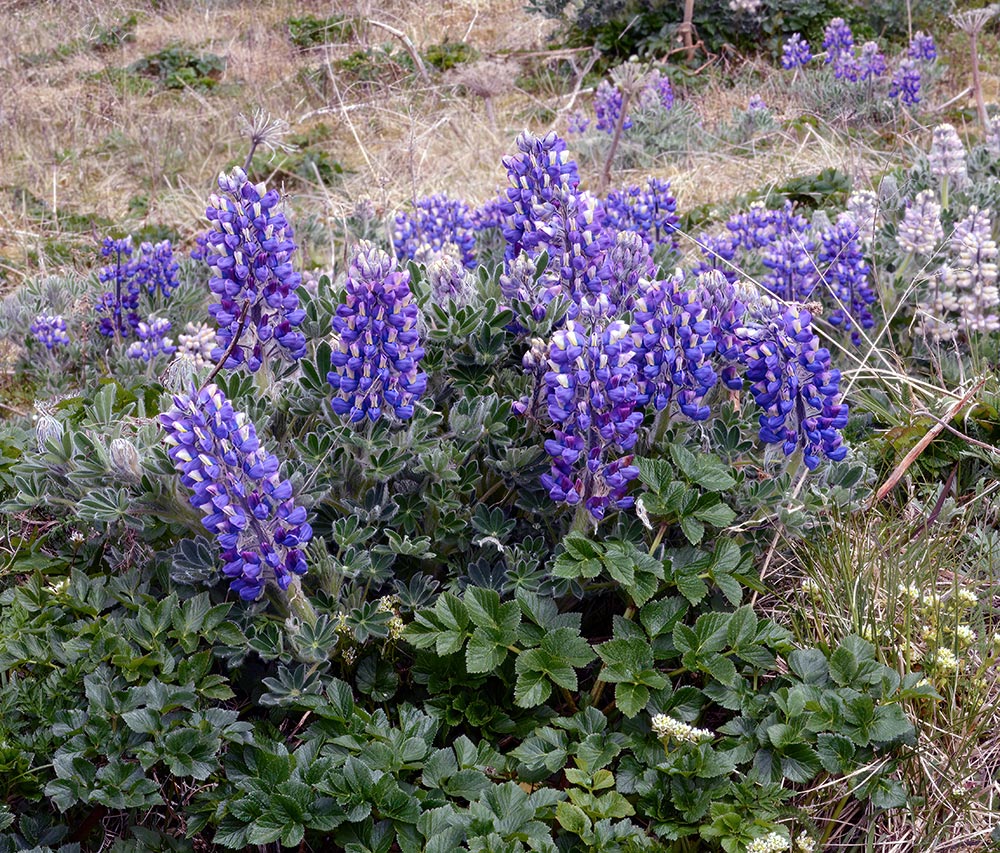
Blue lupine (Lupinus sp.) completely dominated the landscape on St. Paul Island

Arctic Poppy (Papaver alaskanum)
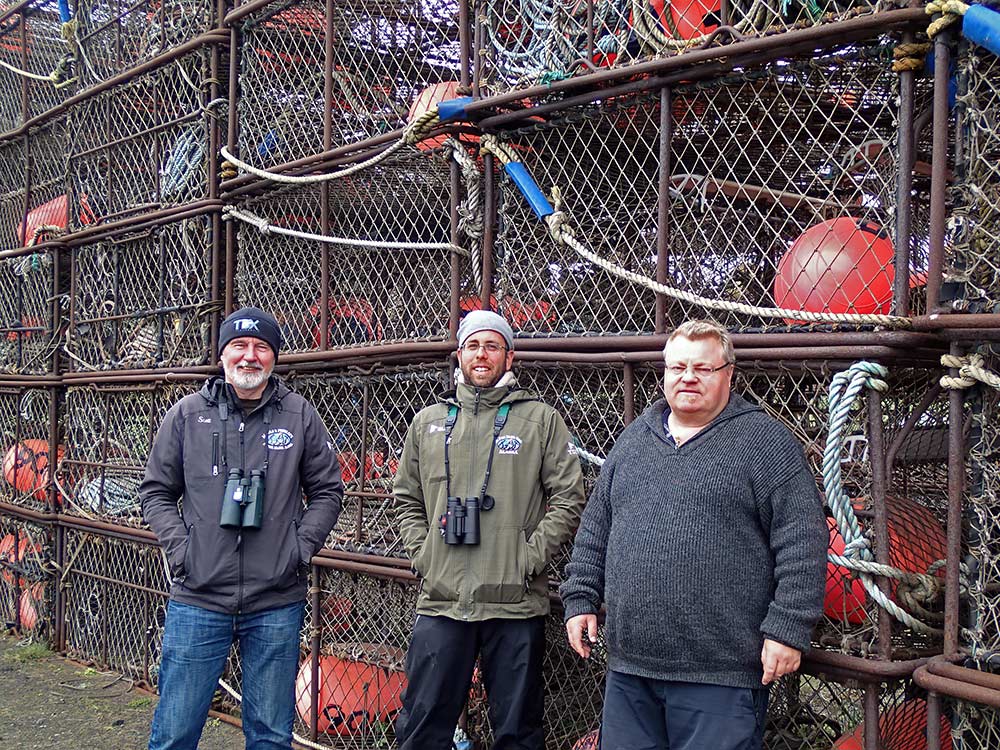
Andrew, Glenn (TDX guide), and me in front of crab pods
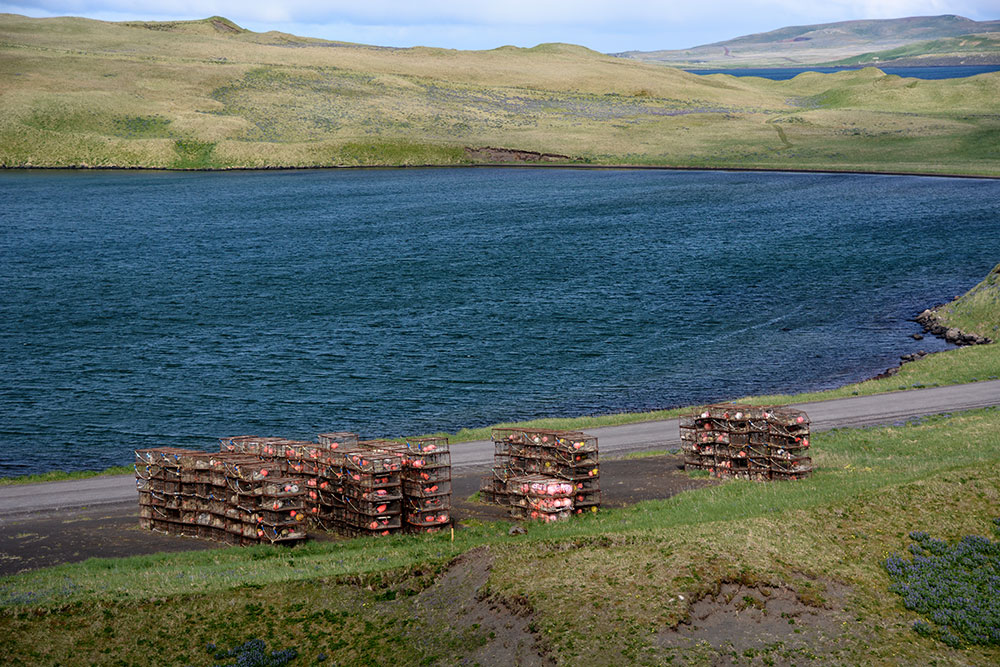
King Crab pods
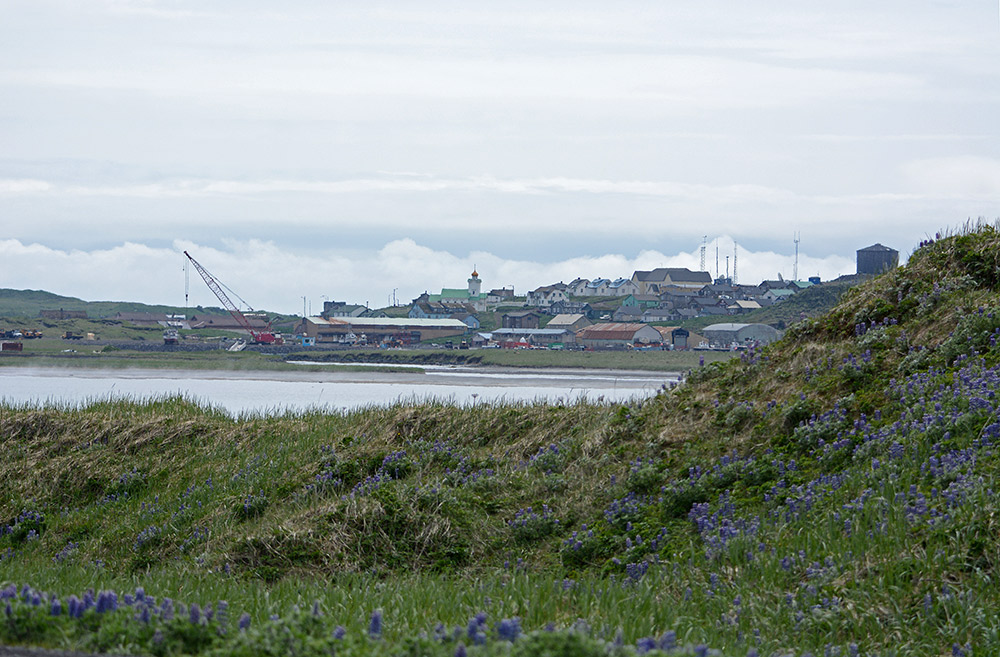
St. Paul Island urban area
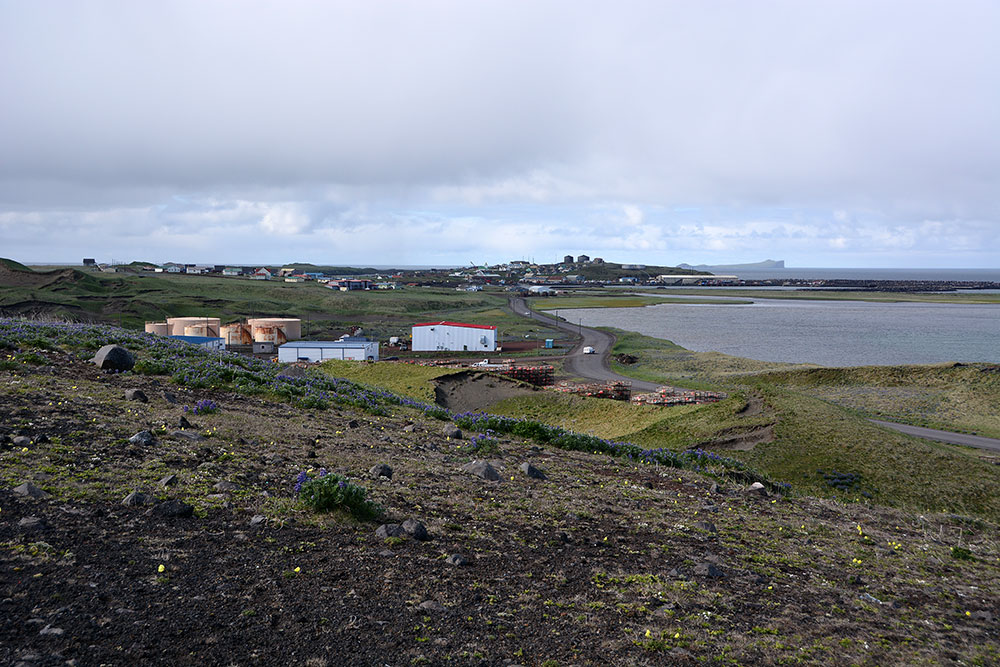
Toward the urban center
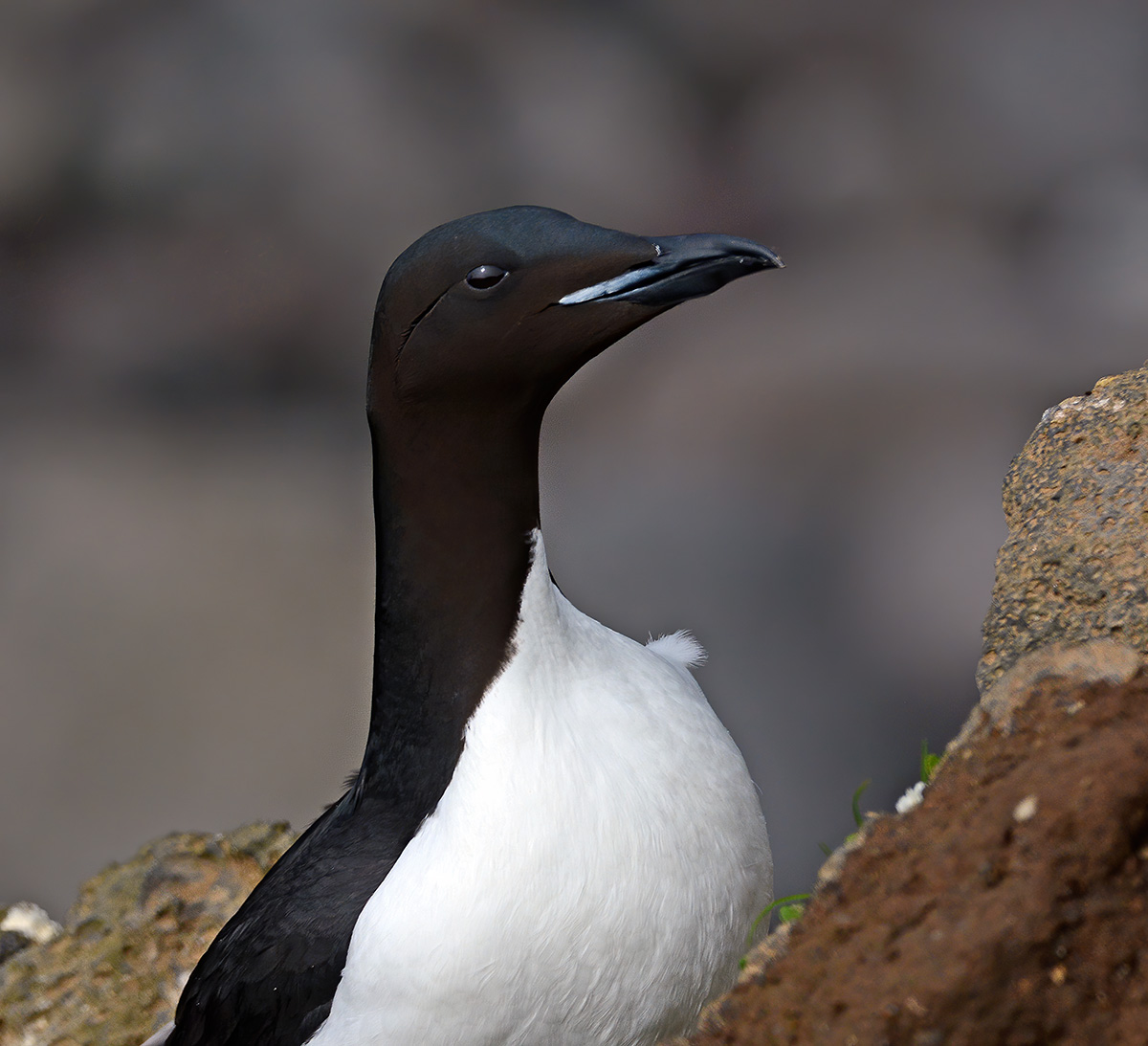
Portrait of the Thick-billed Murre
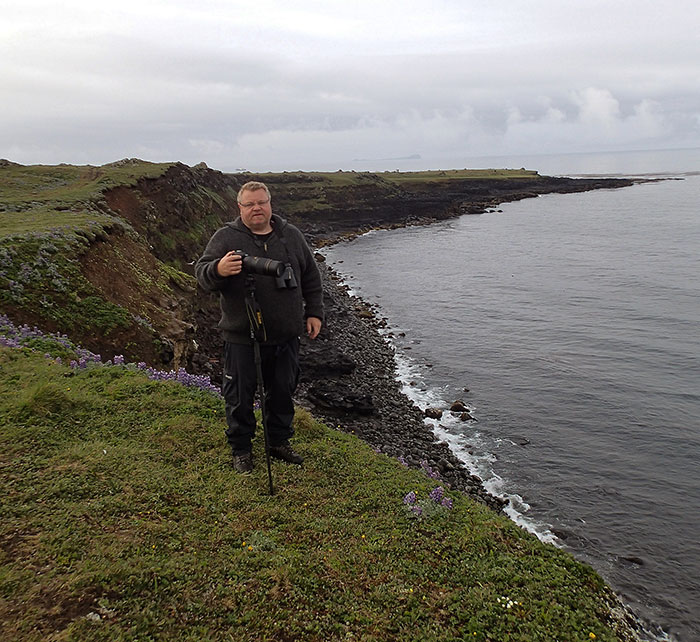
Bird cliff photography
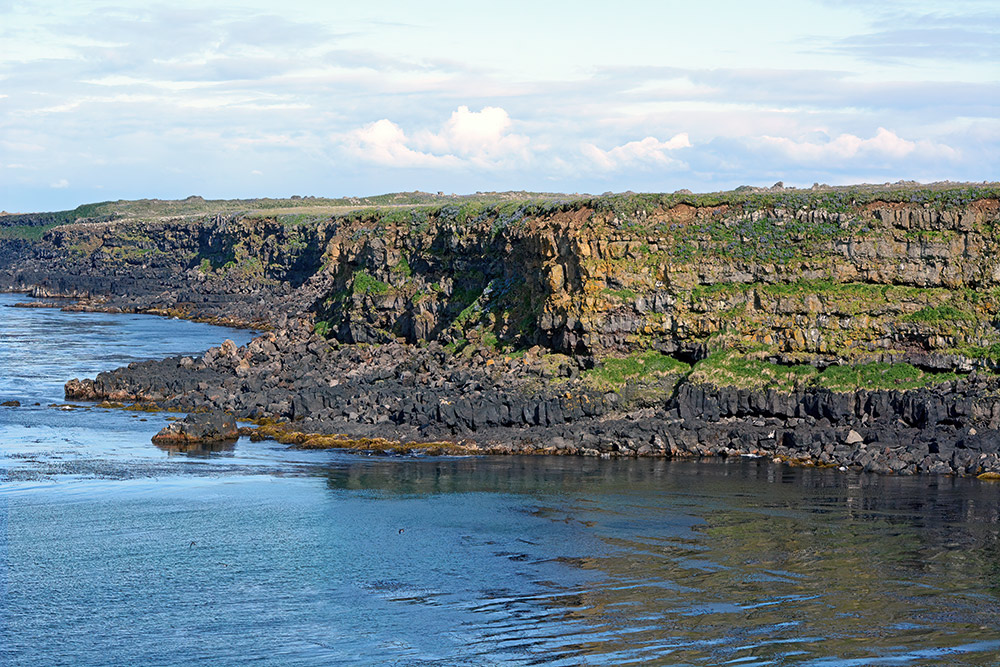
A glimpse of sun! Rarely experienced on St. Paul Island
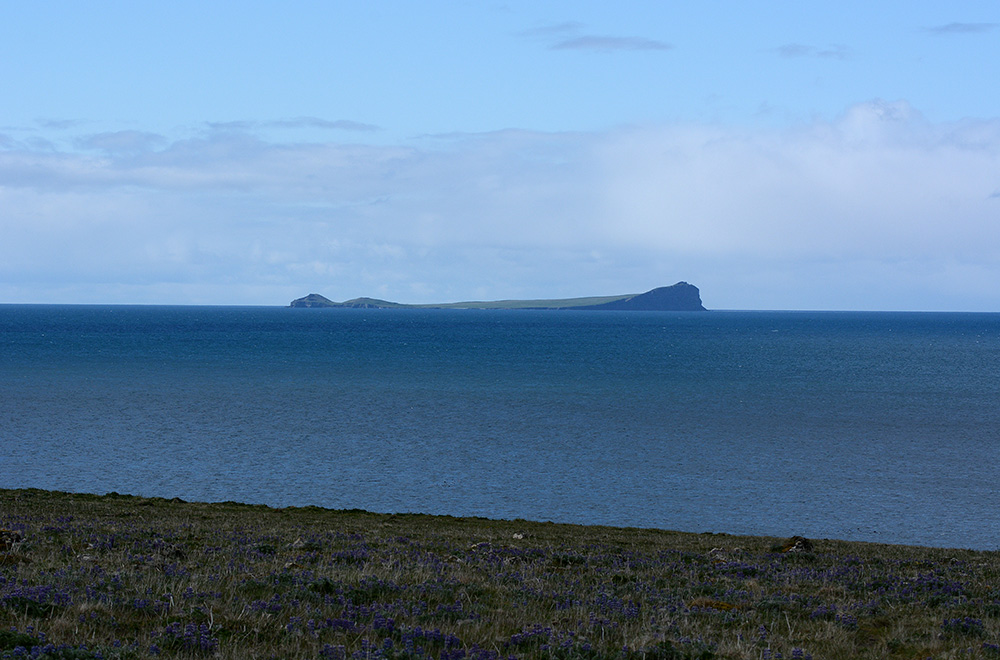
Otter Island seen from St. Paul Island
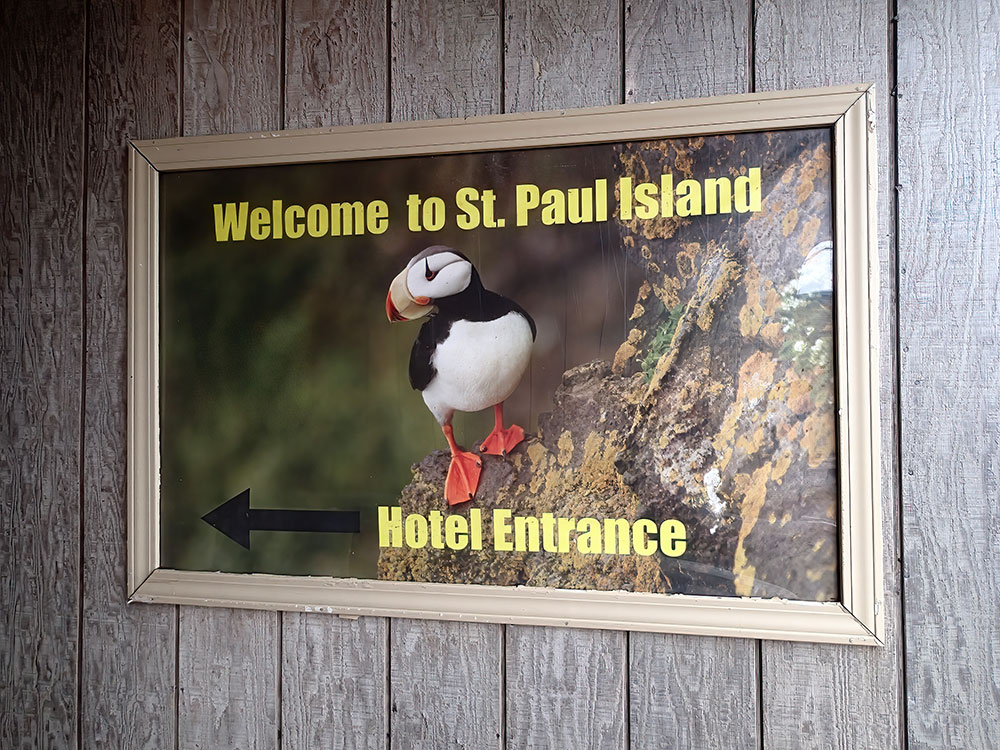
Accommodation
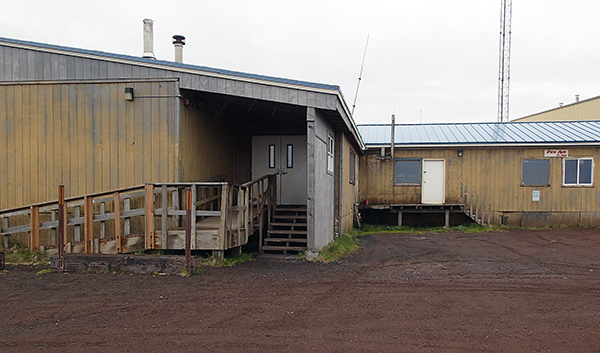
St. Paul Airport terminal AND hotel entrance (King Eider Hotel). Quite basic. For example, no running water and shared restrooms in the hallway

St. Paul Island airport "lounge"
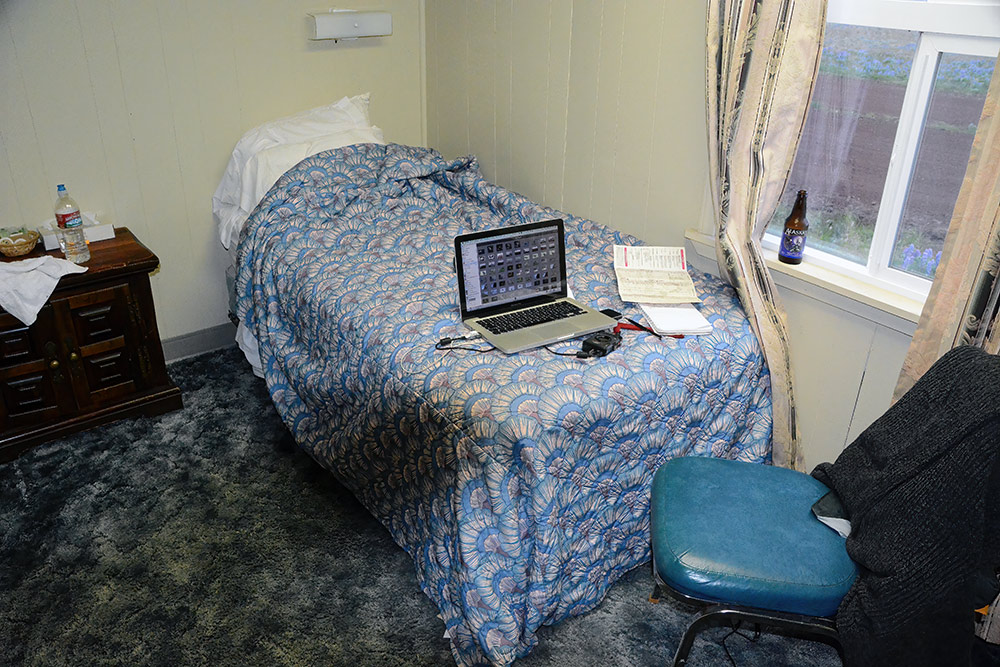
OK "rustic" rooms at the King Eider Hotel
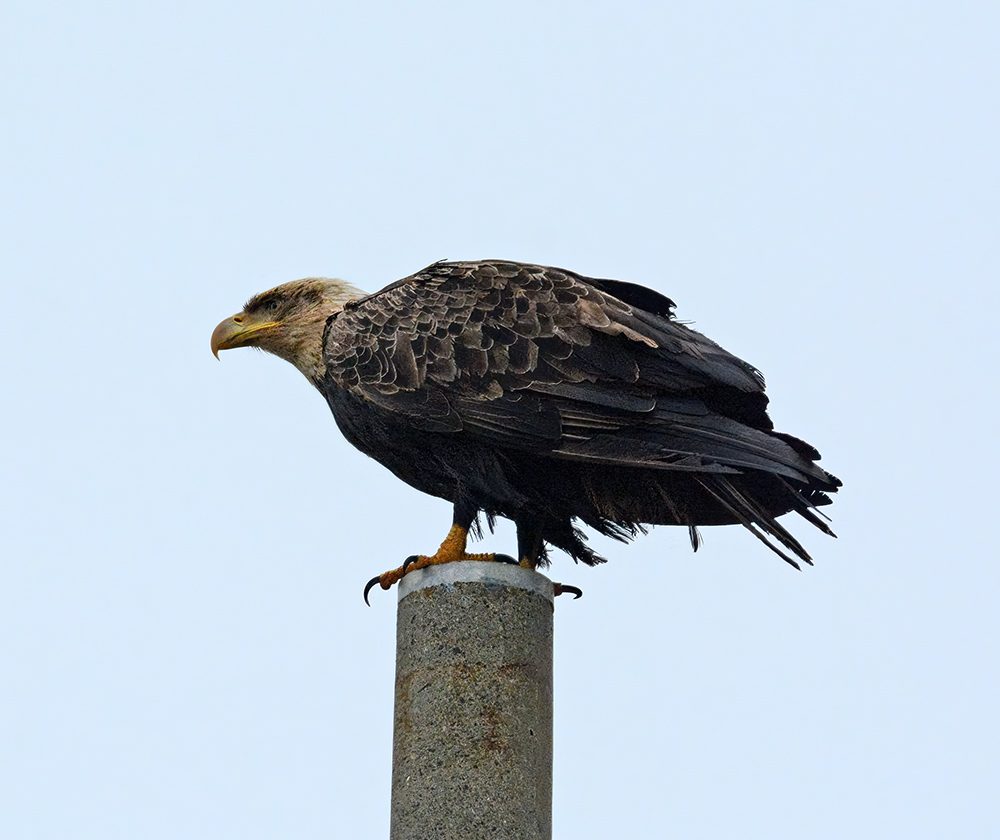
A Bald Eagle (Haliaeetus leucocephalus) on St. Paul Island
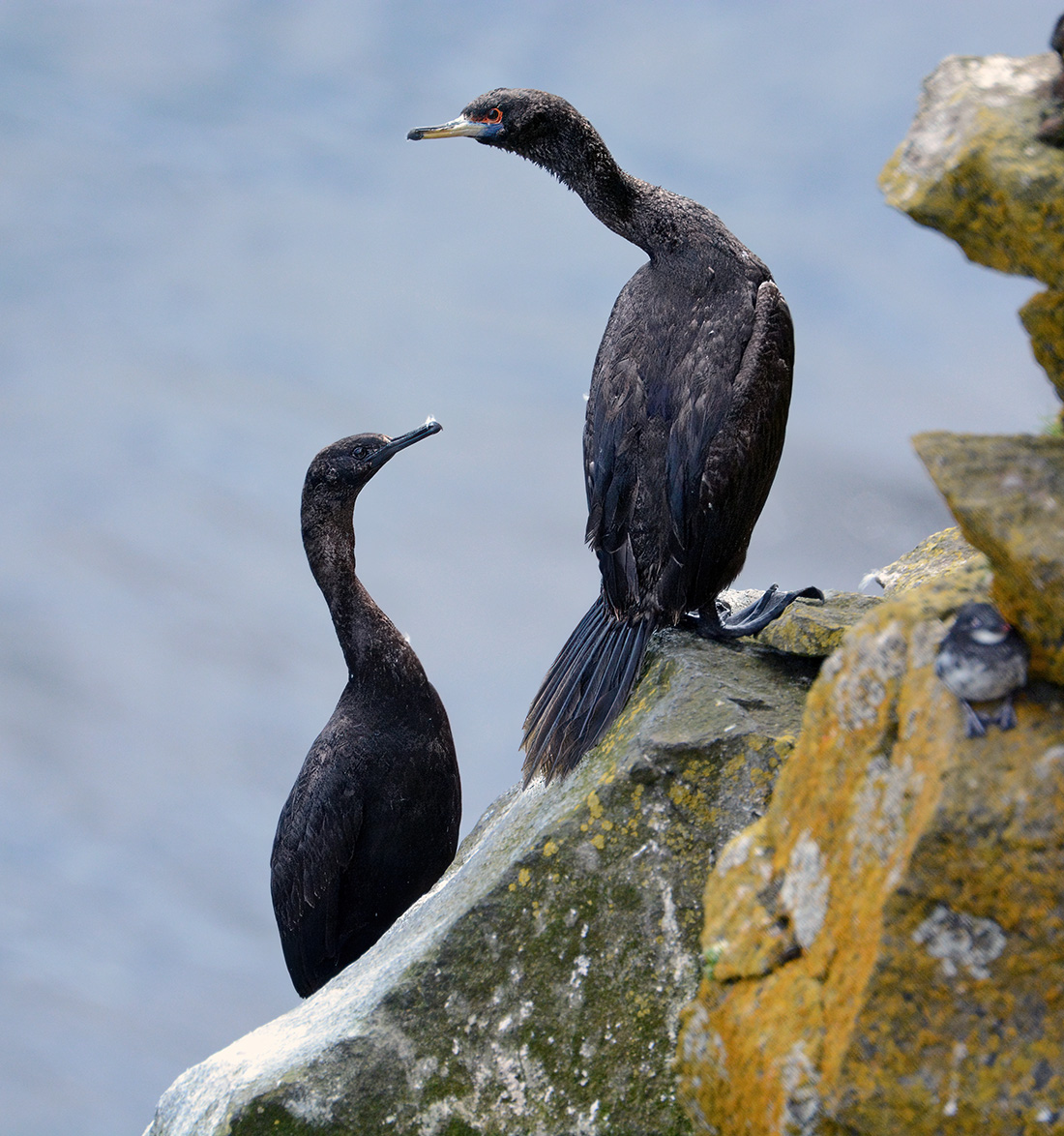
A Pelagic Cormorant (Urile pelagicus) with a Red-faced Cormorant (right)
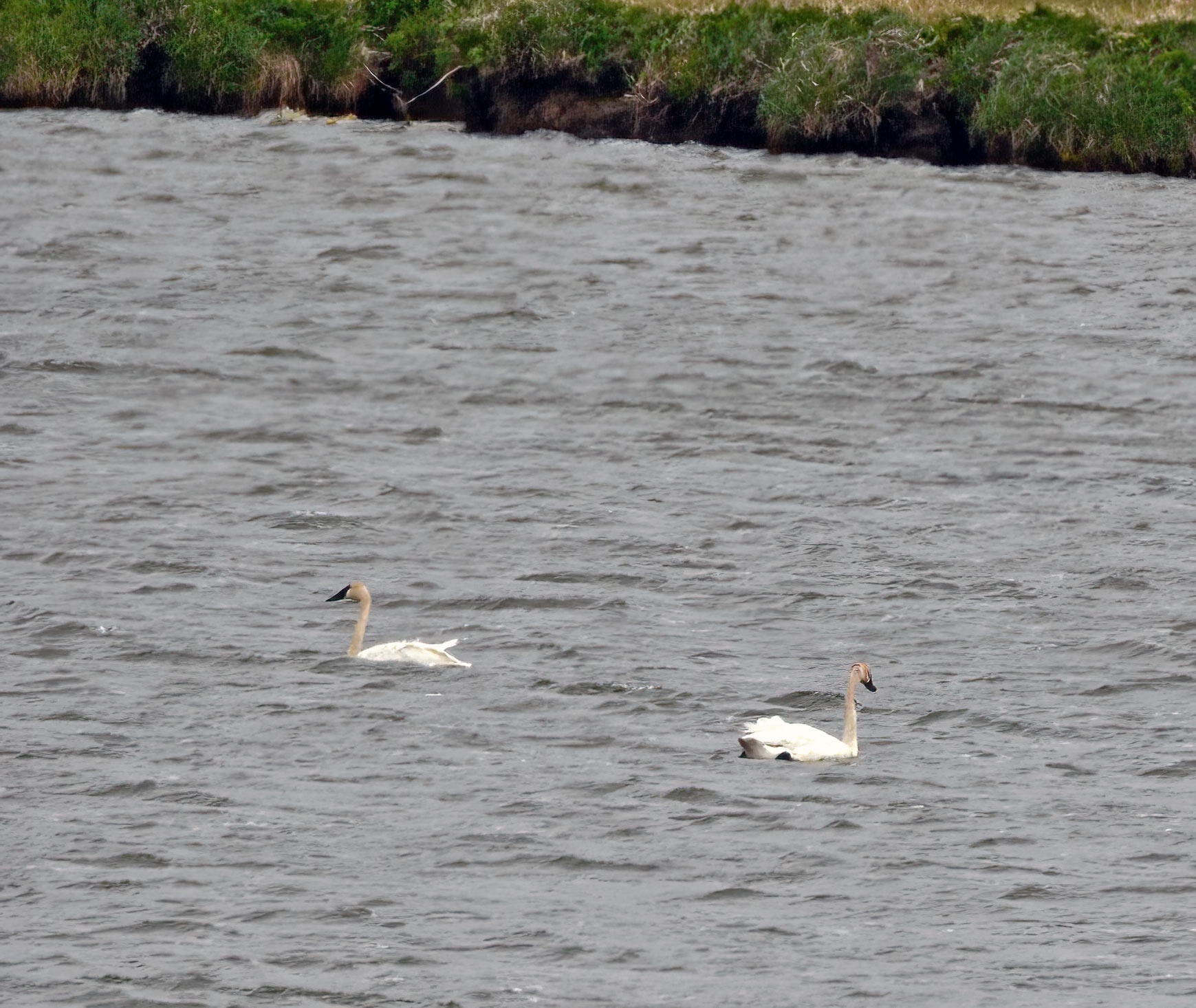
"Whistling" Tundra Swan (Cygnus columbianus columbianus). The Nearctic subspecies is most common on St. Paul Island
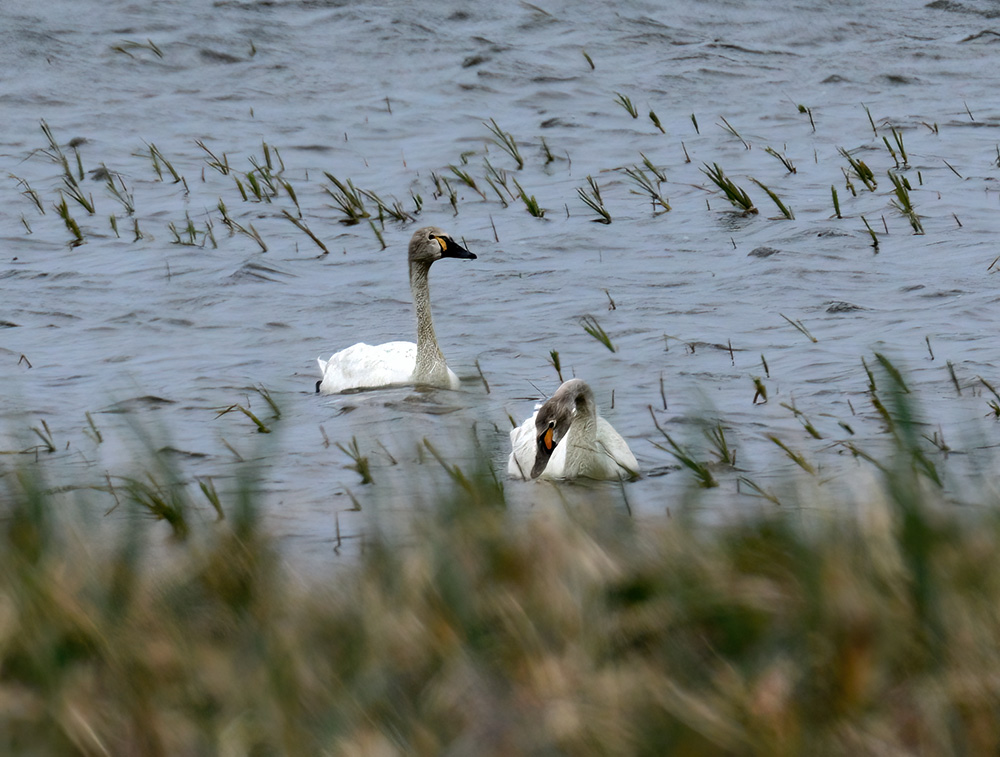
Maybe "Bewick's" Tundra Swan (Cygnus columbianus bewickii)? According to the guides we saw the Palearctic subspecies on the island
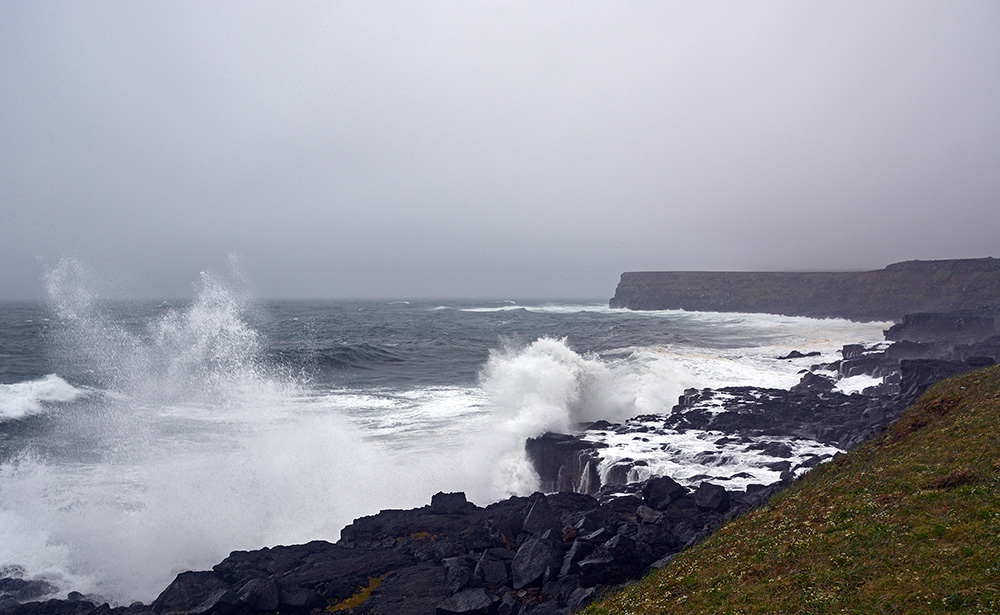
Rough weather. It was rainy, windy and foggy most of the time I spent on the island. Not ideal condition for photography. But according to the guides, this was normal local weather
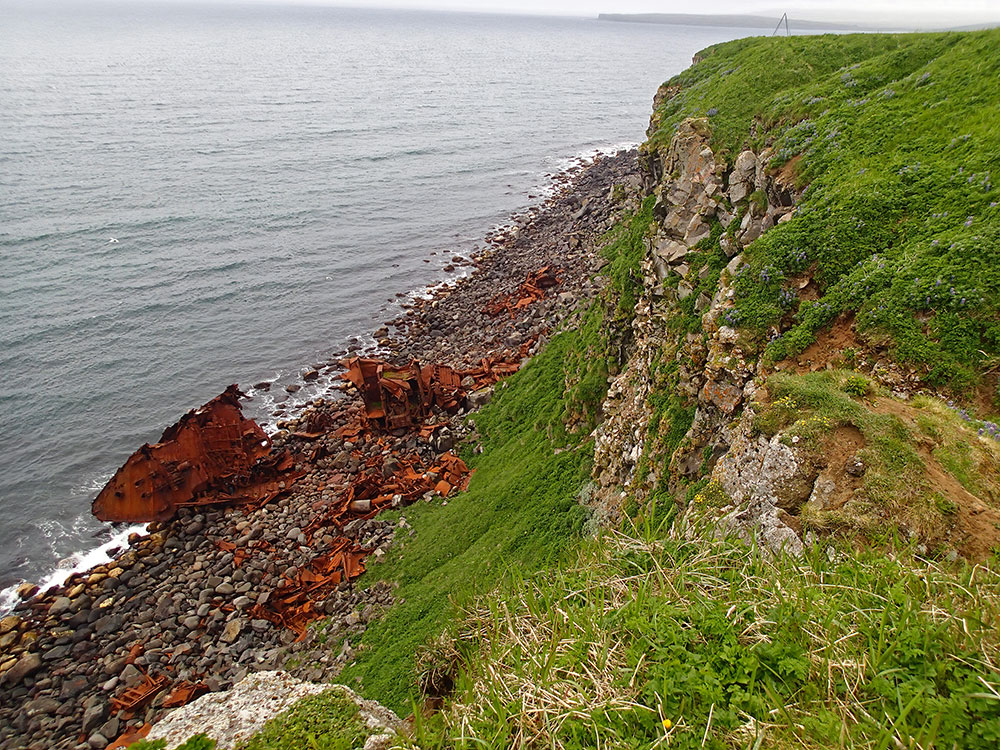
Rough weather can generate shipwrecks
Sneaking up on a Siberian Rubythroat at Hutchinson Hill, St. Paul Island
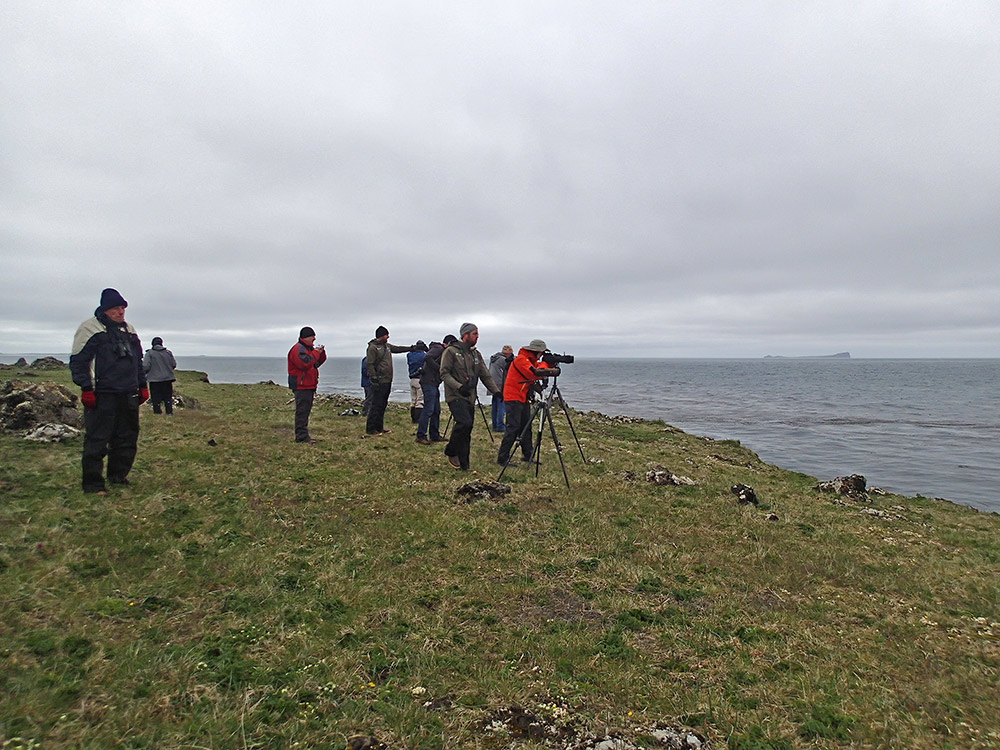
On lookout for Shearwater, Loon, King Eider and other exotic species
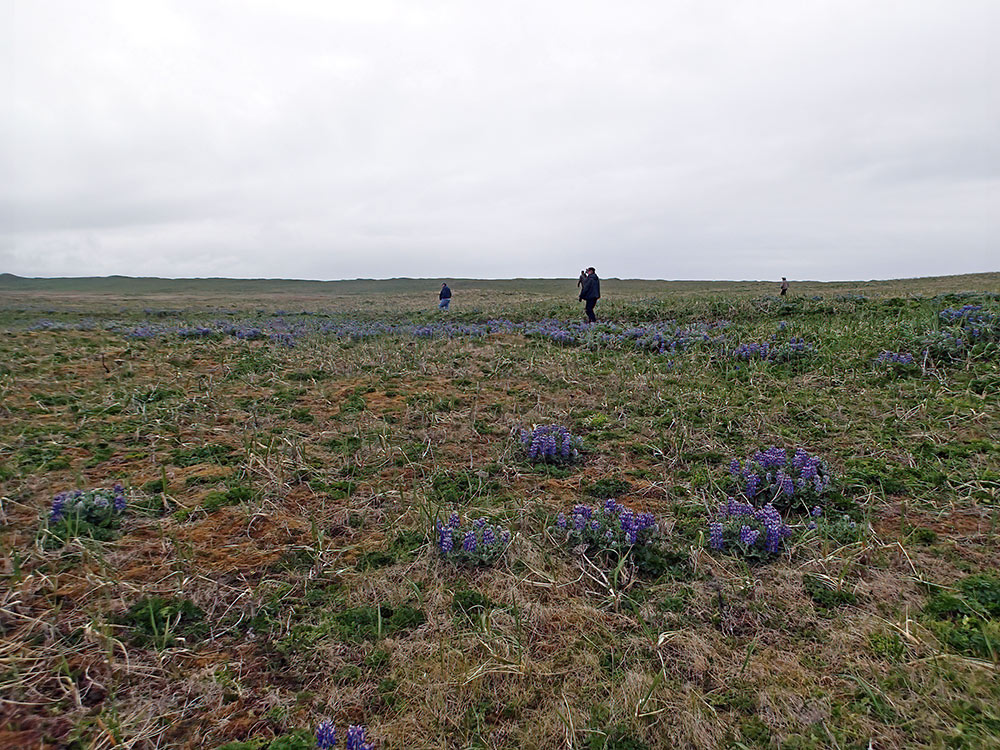
Looking for that Oriental Cuckoo the very first day

Scott, one of the TDX guides. The TDX guides were very committed and provided excellent service
Birding St. Paul Island with TDX
After having been picked up at the airport by the Tanadgusix Corporation (TDX) and installed in our rooms at the King Eider Hotel, we went straight out looking for a rare Oriental Cuckoo. "We" meant me and four other hardcore birders from the lower 48 states. We spent the entire first day looking for two cuckoo species. The first one was the Eurasian Common Cuckoo, which I have seen plenty of in Norway (and which we ultimately caught up with in the quarry). After a while we also came across the Oriental Cuckoo at the north-eastern point of the island. This undoubtly made the day for my fellow US birders. This was the 4th record of the species on St. Paul, and the first since 2004. It was also the 11th ABA record.
I must admit driving and running around for 5 hours the first day only looking for cuckoo's made me a bit skeptical. Was this what I had spent all that money for? Luckily, from day 2, when I was put together with a couple from Washington DC, things became better. These guest were also mainly interested in bird photography, making it a perfect match. We spent up to 14 hours a day out looking for birds. Scott Schuette and Glen Davis, the bird guides for TDX, did an excellent job and directed us to several rare birds they found on the island this year, including the Oriental Cuckoo and the Siberian Rubythroat. Nothing bad to say about the birders I spent the first day with, they were all great fellow travelers. Four full days at St. Paul Island was probably too much anyway, as the summer weather can remain overcast for weeks. And for the rare migrants (I hoped to see the snowy owl there), the best seasons are spring and autumn. All in all, a visit to St. Paul Island is well worht the money, and I highly recommend a trip to this remote Arctic frontier.
List of birds I saw on St. Paul Island
| ANSERIFORMES: Anatidae | |||
| 1 | Cackling Goose | Branta hutchinsii | |
| 2 | Tundra Swan (+ Bewick's swan) | Cygnus columbianus | |
| 3 | Northern Pintail | Anas acuta | |
| 4 | Green-winged Teal | Anas crecca | |
| 5 | Greater Scaup | Aythya marila | |
| 6 | King Eider | Somateria spectabilis | |
| 7 | Harlequin Duck | Histrionicus histrionicus | |
| 8 | Long-tailed Duck | Clangula hyemalis | Vulnerable |
| 9 | Bufflehead | Bucephala albeola | |
| 10 | Red-breasted Merganser | Mergus serrator | |
| GAVIIFORMES: Gaviidae | |||
| 11 | Pacific Loon | Gavia pacifica | |
| 12 | Common Loon | Gavia immer | |
| 13 | Yellow-billed Loon | Gavia adamsii | Near-threatened |
| PROCELLARIIFORMES: Procellariidae | |||
| 14 | Northern Fulmar | Fulmarus glacialis | |
| 15 | Short-tailed Shearwater | Puffinus tenuirostris | |
| SULIFORMES: Phalacrocoracidae | |||
| 16 | Double-crested Cormorant | Phalacrocorax auritus | |
| 17 | Red-faced Cormorant | Phalacrocorax urile | |
| 18 | Pelagic Cormorant | Phalacrocorax pelagicus | |
| ACCIPITRIFORMES: Accipitridae | |||
| 19 | Bald Eagle | Haliaeetus leucocephalus | |
| CHARADRIIFORMES: Charadriidae | |||
| 20 | Semipalmated Plover | Charadrius semipalmatus | |
| CHARADRIIFORMES: Scolopacidae | |||
| 21 | Ruddy Turnstone | Arenaria interpres | |
| 22 | Ruff | Calidris pugnax | Rare/Accidental |
| 23 | Rock Sandpiper | Calidris ptilocnemis | |
| 24 | Red-necked Phalarope | Phalaropus lobatus | |
| 25 | Red Phalarope | Phalaropus fulicarius | |
| CHARADRIIFORMES: Stercorariidae | |||
| 26 | Pomarine Jaeger | Stercorarius pomarinus | |
| CHARADRIIFORMES: Alcidae | |||
| 27 | Common Murre | Uria aalge | |
| 28 | Thick-billed Murre | Uria lomvia | |
| 29 | Parakeet Auklet | Aethia psittacula | |
| 30 | Least Auklet | Aethia pusilla | |
| 31 | Crested Auklet | Aethia cristatella | |
| 32 | Horned Puffin | Fratercula corniculata | |
| 33 | Tufted Puffin | Fratercula cirrhata | |
| CHARADRIIFORMES: Laridae | |||
| 34 | Black-legged Kittiwake | Rissa tridactyla | |
| 35 | Red-legged Kittiwake | Rissa brevirostris | Vulnerable |
| 36 | Glaucous-winged Gull | Larus glaucescens | |
| CUCULIFORMES: Cuculidae | |||
| 37 | Common Cuckoo | Cuculus canorus | Rare/Accidental |
| 38 | Oriental Cuckoo | Cuculus optatus | Rare/Accidental |
| PASSERIFORMES: Hirundinidae | |||
| 39 | Barn Swallow | Hirundo rustica | Rare/Accidental |
| PASSERIFORMES: Muscicapidae | |||
| 40 | Siberian Rubythroat | Calliope calliope | Rare |
| PASSERIFORMES: Motacillidae | |||
| 41 | Eastern Yellow Wagtail | Motacilla tschutschensis | |
| PASSERIFORMES: Calcariidae | |||
| 42 | Lapland Longspur | Calcarius lapponicus | |
| 43 | Snow Bunting | Plectrophenax nivalis | |
| PASSERIFORMES: Fringillidae | |||
| 44 | Gray-crowned Rosy-Finch | Leucosticte tephrocotis | |
| 45 | Common Rosefinch | Carpodacus erythrinus | Rare/Accidental |
| 46 | Common Redpoll | Acanthis flammea |
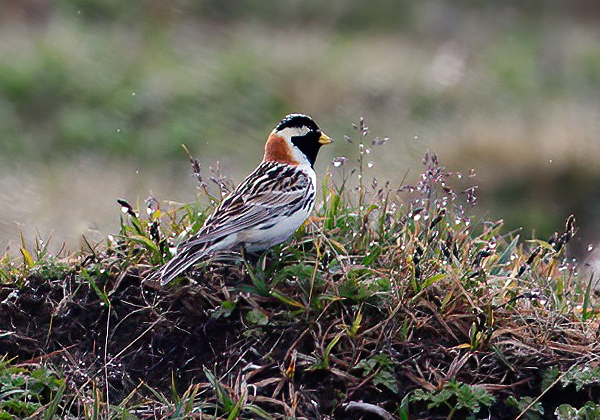
Lapland Longspur (Calcarius lapponicus)
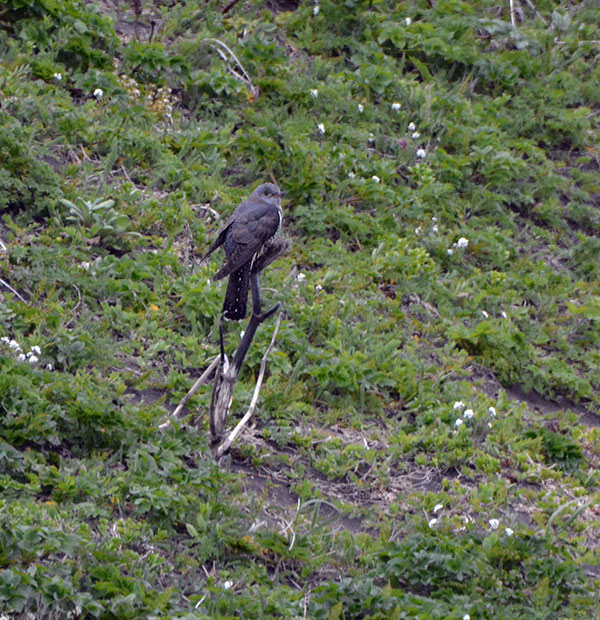
Here is the Oriental Cuckoo (Cuculus optatus) we were searching for the first day